Posts Tagged ‘Fiona Vella’
-
IBGĦATHIELI BIL-POSTA
 “Il-Milied ta’ dari kien inqas kummerċjali minn dak ta’ llum u dan huwa saħansitra evidenti minn dak li tirċievi fil-posta,” għarrafni missieri Saviour Busuttil li qatta’ 37 sena jaħdem bħala pustier.
“Il-Milied ta’ dari kien inqas kummerċjali minn dak ta’ llum u dan huwa saħansitra evidenti minn dak li tirċievi fil-posta,” għarrafni missieri Saviour Busuttil li qatta’ 37 sena jaħdem bħala pustier.Infatti f’dawn l-aħħar snin, hekk kif jibda joqrob il-Milied, il-kaxxi tal-posta tagħna jintlew b’għadd ta’ rivisti u riklami, b’kompetizzjoni bejniethom biex iħajjruk tixtri l-prodotti tagħhom. Ftit li xejn għadna nirċievu kartolini tal-Milied mingħand qrabatna u ħbiebna. Ġeneralment illum dawn l-awguri jaslu bil-fomm, bit-telefon, b’xi email jew b’xi sms fuq il-mobile.
“Sa ftit tas-snin ilu kont għadni nibgħat il-kartolini tal-Milied lill-ġenituri tiegħi u lil ħuti kollha, avolja ħafna minnhom kienu joqogħdu viċin tiegħi. U naturalment jien ukoll kont nirċievi kartolina tal-Milied mingħand kull wieħed u waħda minnhom. Hekk kienet titlob l-użanza. Għaldaqstant tista’ timmaġina l-volum kbir ta’ posta li kien jinħoloq fi żmien il-Milied.”
“Konna nkunu mifqugħin bix-xogħol, tant li wara li konna noħorġu nqassmu l-ittri matul il-ġurnata u nistrieħu ftit id-dar, konna nidħlu lura x-xogħol biex nissortjaw l-ittri. Ġieli domna sad-9.00pm għaddejjin sabiex insibu x-xogħol lest biex jitqassam għall-għada fil-għodu. Żmien il-Milied kien l-uniku perjodu li konna naħdmu l-overtime fih.”
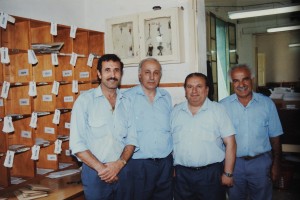 “Biex inlaħħqu mal-kwantità tal-posta, fi żmien il-Milied konna noħorġu nqassmu mat-8.00am. Konna nippakkjaw il-barżakki tagħna sa ruħ ommhom u nerħulha nduru mat-triqat dar dar. Minbarra l-ittri konna nqassmu anki xi pakketti iżda f’każ li l-pakketti jkunu kbar wisq, konna nħallu avviż ħalli dak li jkun imur jiġborhom mill-uffiċċju tal-Posta.”
“Biex inlaħħqu mal-kwantità tal-posta, fi żmien il-Milied konna noħorġu nqassmu mat-8.00am. Konna nippakkjaw il-barżakki tagħna sa ruħ ommhom u nerħulha nduru mat-triqat dar dar. Minbarra l-ittri konna nqassmu anki xi pakketti iżda f’każ li l-pakketti jkunu kbar wisq, konna nħallu avviż ħalli dak li jkun imur jiġborhom mill-uffiċċju tal-Posta.”“Matul il-bqija tas-sena, is-servizz tal-Posta kien jagħti garanzija li ittra li tintbagħat qabel is-7.00am kienet tasal għand ir-riċevitur dakinhar stess. Dan kien impossibbli li tiggarantih fi żmien il-Milied għalkemm konna nagħmlu ħilitna kollha biex il-posta tasal malajr kemm jista’ jkun. Konna nkunu konxji li ħafna kienu jkunu qed jistennewna bil-ħerqa. Sa 40 sena ilu, mhux kulħadd kellu telefon id-dar u l-posta kienet l-uniku mezz ta’ komunikazzjoni. Ngħidu aħna fost l-ittri ġieli kien ikun hemm noti tan-namrati li kienu jiktbu lil xulxin biex jifthemu fejn u fi x’ħin se jiltaqgħu. Mur fehmielhom din liż-żgħażagħ illum!”
“Meta l-internet kien għadu ineżistenti, kollox bil-posta kien jasal u għalhekk in-nies kellhom ċerta relazzjoni ta’ ħbiberija mal-pustier. Hekk kif induru l-kantuniera konna ndoqqu l-qanpiena tar-rota ħalli n-nies jindunaw li wasalna. Imma kien ikun hemm ukoll min ikun qed jistenniena fil-bieb tad-dar tiegħu. Fil-Milied in-nies kienu jilqgħuna b’mod speċjali u jpattulna tas-servizz li konna nagħtuhom matul is-sena kollha. Ħafna kienu jippreparawlna xi grokk u jekk ma noqogħdux attenti, nispiċċaw immorru kuljum fis-sakra d-dar! Kien hemm min jagħtina wkoll xi ħaġa tal-flus u konna ndabbruha tajjeb f’dawk il-ġranet. Kont tħossok apprezzat u allura x-xogħol kien jagħtik aktar sodisfazzjon.”
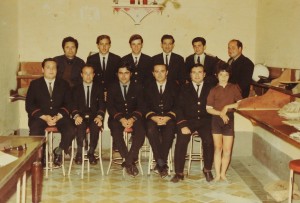 “Illum ċerti affarijiet inbidlu qatiegħ. Il-mezzi ta’ komunikazzjoni żdiedu u allura l-funzjoni tal-Posta ma baqgħetx daqshekk assoluta. Ħafna nies illum jaħdmu, inkluż in-nisa, u allura ssib inqas nies fid-djar filgħodu. Hemm ukoll il-fatt li llum meta jiżżewwġu ‘l ulied mhux neċessarjament qed jibqgħu joqogħdu fl-istess raħal jew belt fejn twieldu. Dan qed ninnutah fiż-Żejtun hekk kif m’għadux jikber bl-istess rata ta’ qabel. Inbidel ukoll it-tip ta’ bini u allura fejn dari il-pustier kien iħabbat bieb, bieb, dar, dar, illum jidħol ġol-entrata ta’ blokk ta’ appartamenti u jħalli l-ittri ġol-kaxxi mingħajr forsi qatt ma jara lir-riċevituri. B’hekk jista’ jkun li r-relazzjoni tan-nies mal-pustier ma baqgħetx li kienet. Madanakollu, jien li niftakar żminijiet oħra, għadni nilqa’ l-pustiera d-dar u ġieli noqgħod nitħaddet magħhom. Fi żmien il-Milied, kif ħaddieħor kien jagħmel miegħi, nagħtihom dik ix-xi ħaġa żgħira wkoll.”
“Illum ċerti affarijiet inbidlu qatiegħ. Il-mezzi ta’ komunikazzjoni żdiedu u allura l-funzjoni tal-Posta ma baqgħetx daqshekk assoluta. Ħafna nies illum jaħdmu, inkluż in-nisa, u allura ssib inqas nies fid-djar filgħodu. Hemm ukoll il-fatt li llum meta jiżżewwġu ‘l ulied mhux neċessarjament qed jibqgħu joqogħdu fl-istess raħal jew belt fejn twieldu. Dan qed ninnutah fiż-Żejtun hekk kif m’għadux jikber bl-istess rata ta’ qabel. Inbidel ukoll it-tip ta’ bini u allura fejn dari il-pustier kien iħabbat bieb, bieb, dar, dar, illum jidħol ġol-entrata ta’ blokk ta’ appartamenti u jħalli l-ittri ġol-kaxxi mingħajr forsi qatt ma jara lir-riċevituri. B’hekk jista’ jkun li r-relazzjoni tan-nies mal-pustier ma baqgħetx li kienet. Madanakollu, jien li niftakar żminijiet oħra, għadni nilqa’ l-pustiera d-dar u ġieli noqgħod nitħaddet magħhom. Fi żmien il-Milied, kif ħaddieħor kien jagħmel miegħi, nagħtihom dik ix-xi ħaġa żgħira wkoll.”Missieri daħal jaħdem bħala pustier meta kellu 18 il-sena.
“Iz-ziju Ċikku kien jaqra l-gazzetti kuljum u kien hu li qalli li kienu fetħu l-applikazzjonijiet għall-pustiera ġodda. Ta’ 16 il-sena temmejt l-edukazzjoni tiegħi u bħal għadd ta’ nies oħra spiċċajt nirreġistra. Kien ikun hemm ringieli sħaħ ta’ mijiet ta’ nies jirreġistraw għax ma tantx kien hemm xogħol. Biex tilħaq pustier kien ikollok toqgħod għall-eżamijiet bil-miktub fil-Matematika, l-Ingliż u l-Ġografija u ridt tiġi minn ta’ quddiem. Meta dħalt jien kienu applikaw madwar 170 u għażlu 50.”
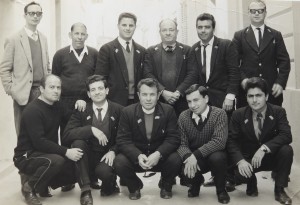 “Dħalt naħdem fl-uffiċċju tal-Posta taż-Żejtun li dak iż-żmien kien ikopri wkoll lil Ħal-Għaxaq, il-Gudja, Marsaxlokk u Birżebbuġa. L-ewwel ħmistax kont tqattagħhom titgħallem ir-rotta li tkun ġiet assenjata lilek. Kont tmur issegwi pustier ieħor ħalli tara kif jaħdem. F’dawk il-ġranet kont mistenni titgħallem l-ismijiet tat-toroq u tkun taf fejn huma d-djar. Jien ma kelli l-ebda problema f’dan il-qasam peress li minn tfuliti kont nixtieq insir pustier. Kont affaxxinat bit-toroq u bl-ismijiet tagħhom u għalhekk kont diġà qbadt nitgħallimhom bl-amment. Imma xorta waħda kien hemm triqat jew sqaqien fiż-Żejtun li ssorprendewni għax qatt ma kont dħalt fihom qabel. Aktar il-quddiem imbagħad kelli l-opportunità li nsir naf it-triqat ta’ partijiet ta’ Ħal-Għaxaq u tal-Gudja peress li kont inqassam hemm ukoll.”
“Dħalt naħdem fl-uffiċċju tal-Posta taż-Żejtun li dak iż-żmien kien ikopri wkoll lil Ħal-Għaxaq, il-Gudja, Marsaxlokk u Birżebbuġa. L-ewwel ħmistax kont tqattagħhom titgħallem ir-rotta li tkun ġiet assenjata lilek. Kont tmur issegwi pustier ieħor ħalli tara kif jaħdem. F’dawk il-ġranet kont mistenni titgħallem l-ismijiet tat-toroq u tkun taf fejn huma d-djar. Jien ma kelli l-ebda problema f’dan il-qasam peress li minn tfuliti kont nixtieq insir pustier. Kont affaxxinat bit-toroq u bl-ismijiet tagħhom u għalhekk kont diġà qbadt nitgħallimhom bl-amment. Imma xorta waħda kien hemm triqat jew sqaqien fiż-Żejtun li ssorprendewni għax qatt ma kont dħalt fihom qabel. Aktar il-quddiem imbagħad kelli l-opportunità li nsir naf it-triqat ta’ partijiet ta’ Ħal-Għaxaq u tal-Gudja peress li kont inqassam hemm ukoll.”“Ix-xogħol mill-ewwel għoġobni. Toqgħod iddur fit-toroq u l-isqaqien u tgħid ara das-sqaq qatt ma rajtu qabel! U n-nies kienu dħulin. Kienu jħobbuna ħafna u jafdaw ħafna fina. Uħud meta jirċievu xi ittra kienu jistaqsuni ‘Ta’ x’hiex inhi?’ U ngħidilhom tal-income tax jew tal-Awstralja per eżempju. Kif ngħidilhom tal-Awstralja kien ikun hemm min jistaqsini mingħand min għax kien ikollhom ħafna tfal hemm. U ġieli kien hemm min kien idaħħalni d-dar, jagħmilli belgħa tè, jpoġġi miegħi mal-mejda u joqgħod jismagħni naqralu l-ittra.”
“Fil-bidu pustier ġdid ma kienx ikollu r-rotta tiegħu imma kien iservi bħala sostitut sabiex jagħmel tajjeb għal meta pustiera oħra jkollhom bżonn jieħdu l-leave jew ikunu ma jifilħux. Iż-Żejtun kien maqsum f’erbgħa sezzjonijiet u ftit ftit kont tasal sakemm titgħallem ir-rotot kollha. Wara 5 snin kont tieqaf tissostitwixxi u jkollok ir-rotta tiegħek.”
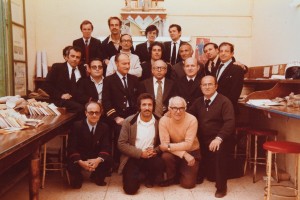 “Ix-xogħol ta’ pustier kien jinkludi li jinġabru l-ittri mill-kaxxi tal-ittri pubbliċi kollha taż-Żejtun, il-Gudja, Marsaxlokk u Birżebbuġa fis-7.00am u jittieħdu l-uffiċċju. Imbagħad l-ittri kollha kienu jitqassmu skont id-distrett tagħhom. Dawk l-ittri li kienu se jitqassmu mill-Posta taż-Żejtun kienu jinżammu filwaqt li l-oħrajn kienu jintbagħtu ma’ vann li jiġi jiġborhom biex jeħodhom fl-uffiċċju prinċipali tal-Belt. L-ittri li jinżammu kienu jiġu rranġati skont ir-rotot u kif inlestu noħorġu nqassmuhom fid-djar. Kollox kellu jitqassam dakinhar stess u kif tlesti stajt tmur lejn id-dar. Min kien imur idur bil-mixi u min bir-rota u għal dawk ir-residenti li kienu joqogħdu fl-imbiegħed, bħall-inħawi tal-bajja ta’ San Tumas u Ħal-Far, il-pustier kien imur bil-mutur. Għal xi l-10.00am kien jasal vann ieħor mill-Belt li kien iġib il-posta li jkunu rċevew l-uffiċċji tal-posta l-oħra.”
“Ix-xogħol ta’ pustier kien jinkludi li jinġabru l-ittri mill-kaxxi tal-ittri pubbliċi kollha taż-Żejtun, il-Gudja, Marsaxlokk u Birżebbuġa fis-7.00am u jittieħdu l-uffiċċju. Imbagħad l-ittri kollha kienu jitqassmu skont id-distrett tagħhom. Dawk l-ittri li kienu se jitqassmu mill-Posta taż-Żejtun kienu jinżammu filwaqt li l-oħrajn kienu jintbagħtu ma’ vann li jiġi jiġborhom biex jeħodhom fl-uffiċċju prinċipali tal-Belt. L-ittri li jinżammu kienu jiġu rranġati skont ir-rotot u kif inlestu noħorġu nqassmuhom fid-djar. Kollox kellu jitqassam dakinhar stess u kif tlesti stajt tmur lejn id-dar. Min kien imur idur bil-mixi u min bir-rota u għal dawk ir-residenti li kienu joqogħdu fl-imbiegħed, bħall-inħawi tal-bajja ta’ San Tumas u Ħal-Far, il-pustier kien imur bil-mutur. Għal xi l-10.00am kien jasal vann ieħor mill-Belt li kien iġib il-posta li jkunu rċevew l-uffiċċji tal-posta l-oħra.”“Qattgħajt 22 sena niġri bir-rota u nqassam l-ittri. Bħal kull xogħol hemm is-sabiħ u l-ikraħ tiegħu. Fis-sajf kont tbati mis-sħana u mill-qilla tax-xemx imma fix-xitwa kien wisq agħar għax kont tixxarrab jekk ikun il-maltemp u tirriskja li tlaqqgħat xi riħ. Kien hemm ukoll problema bil-klieb tan-nies li ġieli kienu jħebbu għalik kif jarawk riesaq. Darba minnhom gidimni kelb u ċarratli l-qalziet tal-uniformi.”
“Wara 22 sena ngħatajt promozzjoni u lħaqt Mail Officer u xogħoli kien fuq ġewwa biss. Meta għaddew 10 snin oħra lħaqt Mail Inspector u hemm ġejt responsabbli mill-uffiċċju tal-Posta taż-Żejtun. Matul is-snin rajt diversi żviluppi jseħħu fosthom l-introduzzjoni ta’ pustiera nisa li qabel kienu jiġu evitati biex ma jkunx hemm taħlit bejn nisa u rġiel. Finalment ta’ 55 sena ħriġt bil-pensjoni.”
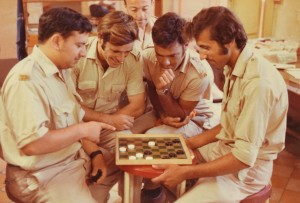 Illum missieri jgħodd is-70 sena iżda għalkemm għaddew 15 il-sena minn mindu waqaf mix-xogħol, għadu jiftakar ċar l-ismijiet kollha tat-triqat tal-inħawi li ħadem fihom, in-numri tad-djar u saħansitra l-kunjomijiet tas-sidien tagħhom ukoll.
Illum missieri jgħodd is-70 sena iżda għalkemm għaddew 15 il-sena minn mindu waqaf mix-xogħol, għadu jiftakar ċar l-ismijiet kollha tat-triqat tal-inħawi li ħadem fihom, in-numri tad-djar u saħansitra l-kunjomijiet tas-sidien tagħhom ukoll.“Sal-bieraħ iltqajt ma’ waħda ġo ħanut li kellha madwar 40 sena. X’ħin ratni qaltli ‘Tiftakar kemm kont tagħtina posta?’ Għall-ewwel m’għarafthiex imma meta semmietli t-triq fejn kienet toqgħod, stajt ngħidilha n-numru tal-bieb tagħhom u l-kunjom tal-familja. Stagħġbet li kont għadni niftakar wara tant snin!”
Meta tkun qattgħajt daqstant żmien taħdem bħala pustier diffiċli tinsa l-informazzjoni kollha li tkun immemorizzajt. Missieri jistqarr li kultant għadu joħlom li qiegħed idur bir-rota madwar it-toroq iqassam l-ittri lin-nies.
(Dan l-artiklu ġie ppubblikat fis-suppliment Senior Times li ħareġ mal-ġurnal The Times of Malta tal-15 ta’ Diċembru 2017)
-
MAN ON A MISSION
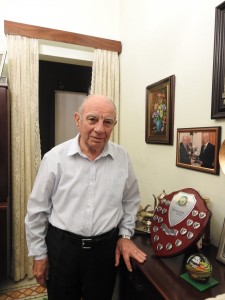 “Ageing should not be a barrier in life but a further opportunity to excel,” insists 80-year-old Angelo Zahra who has recently been selected to receive the main prize in the award ‘Premju Anzjanità Attiva’ (Award for the Active Ageing) for his voluntary management of three homes for the disabled.
“Ageing should not be a barrier in life but a further opportunity to excel,” insists 80-year-old Angelo Zahra who has recently been selected to receive the main prize in the award ‘Premju Anzjanità Attiva’ (Award for the Active Ageing) for his voluntary management of three homes for the disabled.Zahra studied mechanical engineering at the Dockyard Technical College and for several years, he served in managerial roles. Before his retirement, at age 63, he was the Director of the Manufacturing and Services Department with the Government of Malta.
“I have known Fr Angelo Seychell since his priesthood and I have always admired his work. When he founded the Nazareth Foundation in 1995 and opened his house to provide a home for people with special needs, I supported his venture by collecting donations from my colleagues twice a year. However, I was not directly involved with Dar Nazareth.”
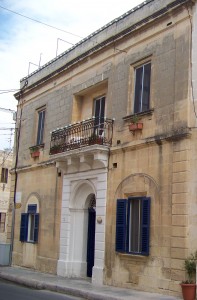 Yet Fr Seychell had for long earmarked Zahra to help him develop his mission to create a warm family environment in which people with disabilities could lead a good and respectful life which gave them the possibility to be happy and to achieve their full potential.
Yet Fr Seychell had for long earmarked Zahra to help him develop his mission to create a warm family environment in which people with disabilities could lead a good and respectful life which gave them the possibility to be happy and to achieve their full potential.“As soon as I retired, Fr Seychell approached me and asked me to consider serving as the administrator of Dar Nazareth. I accepted on condition to start three months later since I had promised my wife that I would finally take a much-awaited break from work. In the meantime, my wife and I booked a tour to Lourdes and to our great surprise we found out that the group which we were going to travel with were none other than Fr Seychell, his volunteers and the residents at Dar Nazareth. This was a golden opportunity to get to know everyone better and soon, I was deeply involved with the Nazareth Foundation.”
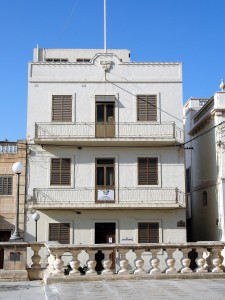 “In September 2000, when I joined in, there were only five residents at Dar Nazareth. However, in a short time, the house was elaborated to receive a further five residents where it reached its full capacity. A year later, the Foundation rented a workshop wherein our residents could attend daily to entertain themselves and to make crafts which could be sold to the public.”
“In September 2000, when I joined in, there were only five residents at Dar Nazareth. However, in a short time, the house was elaborated to receive a further five residents where it reached its full capacity. A year later, the Foundation rented a workshop wherein our residents could attend daily to entertain themselves and to make crafts which could be sold to the public.”Dar Nazareth addressed a demand which had been stalled for several years. Soon, its success lead to the establishment of two other houses.
“In 2004, the Foundation opened the second house, Dar l-Arċipriet Degabriele, which welcomed a further nine residents. Five years later, the third house, Dar Jean Vanier, opened its doors to another nine residents.”
While in the beginning Dar Nazareth was operated by volunteers, the increase in residents and houses required the engagement of full-time workers.
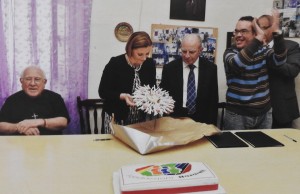 “The funding of such projects is always one of the major stumbling blocks. The Foundation had succeeded to purchase two properties and develop them into residential homes. It also managed to acquire enough money to fund the salary of 30 full-time workers. Nevertheless, the sourcing of further income to sustain all the expenses required to keep these three homes functioning are a constant responsibility. Thankfully, in 2016, the Government signed an agreement with Nazareth Foundation through which it was given 1.4 million euro over a period of three years. This serves as a safety net for the Foundation’s administration to provide the best service possible to its residents.”
“The funding of such projects is always one of the major stumbling blocks. The Foundation had succeeded to purchase two properties and develop them into residential homes. It also managed to acquire enough money to fund the salary of 30 full-time workers. Nevertheless, the sourcing of further income to sustain all the expenses required to keep these three homes functioning are a constant responsibility. Thankfully, in 2016, the Government signed an agreement with Nazareth Foundation through which it was given 1.4 million euro over a period of three years. This serves as a safety net for the Foundation’s administration to provide the best service possible to its residents.”For the past 17 years, Zahra has voluntarily taken in hand the management of these three homes and presently he also acts as President of the Nazareth Foundation Board.
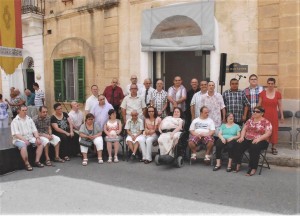 “This work has become my mission to do something worthwhile with my available time. It gives me utter satisfaction to see our residents living in a friendly and family environment where they can feel safe, at ease, and loved. Their appreciation and happiness in return give me a sense of fulfilment and help me to feel much younger.”
“This work has become my mission to do something worthwhile with my available time. It gives me utter satisfaction to see our residents living in a friendly and family environment where they can feel safe, at ease, and loved. Their appreciation and happiness in return give me a sense of fulfilment and help me to feel much younger.”(This feature was published in the Senior Times supplement issued with The Times of Malta on 15 December 2017)
-
LIGHTS OUT FOR CHRISTMAS
Christmas time and the days preceding it are generally associated with colour, light, optimism and fun. Yet this was not the case in 1939 when the Christmas season became synonymous with gloom, darkness, uncertainty and fear.
On 18 September 1939, a table showing the duration of the ‘Official Night’ was published in Government Notice No. 459 in The Malta Government Gazette. This table included each day of each month and the beginning and end of what was to be considered as the official night hours. Such instructions formed part of the Malta Defence Regulations, 1939, which aimed to protect the Maltese Islands and its inhabitants as World War II ravaged in other countries.
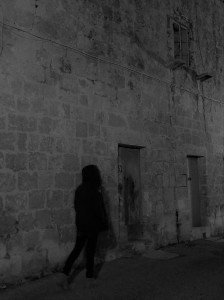 Two days later, on 20 September 1939, Government Notice No. 473 issued the Lights Restriction Order which was effective from that day. The directions of this Order had to be observed between midnight and 4:30am on every day of the week, and also between 10:00pm and midnight on Fridays. During these times, all lights in any building had to be masked to be invisible from the sea and from the air. No lights, other than lights authorised by the competent authority, were permitted in any open spaces whether private or public, in yards, roofs or open verandas. The use of illuminated lettering or signs in any shops were prohibited unless authorised by the Commissioner of Police or the competent authority. The traffic of motor vehicles during these hours was banned and any vehicles which did not comply with these provisions could be stopped and detained until 6:00am. Obviously, all fireworks were also prohibited.
Two days later, on 20 September 1939, Government Notice No. 473 issued the Lights Restriction Order which was effective from that day. The directions of this Order had to be observed between midnight and 4:30am on every day of the week, and also between 10:00pm and midnight on Fridays. During these times, all lights in any building had to be masked to be invisible from the sea and from the air. No lights, other than lights authorised by the competent authority, were permitted in any open spaces whether private or public, in yards, roofs or open verandas. The use of illuminated lettering or signs in any shops were prohibited unless authorised by the Commissioner of Police or the competent authority. The traffic of motor vehicles during these hours was banned and any vehicles which did not comply with these provisions could be stopped and detained until 6:00am. Obviously, all fireworks were also prohibited.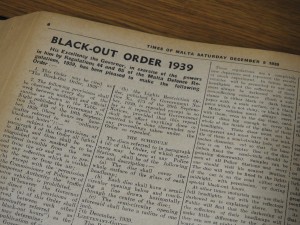 An Air-Raid Precautions Order was communicated in Government Notice No. 504 on 4 October 1939. Eventually on 9 December 1939, The Times of Malta published the provisions of The Black-Out Order, 1939, which had to be observed on every day of the week between midnight and the official sunrise. During these hours, all the lights on the Islands had to be extinguished or masked as to be rendered invisible from the sea and from the air. Special Black-Out hours could also be determined when necessary.
An Air-Raid Precautions Order was communicated in Government Notice No. 504 on 4 October 1939. Eventually on 9 December 1939, The Times of Malta published the provisions of The Black-Out Order, 1939, which had to be observed on every day of the week between midnight and the official sunrise. During these hours, all the lights on the Islands had to be extinguished or masked as to be rendered invisible from the sea and from the air. Special Black-Out hours could also be determined when necessary. As part of the Black-Out Order, from 14 December 1939, all motor vehicles which had to travel at night, other than those belonging to His Majesty’s service, had to have their bulbs removed from their lamps. Opaque cardboard discs were to be fixed to the lights of the vehicles and the reflectors’ surface had to be covered with a non-reflecting substance. A white disc had to be affixed at the back of all motor vehicles at a height of three feet from the ground to make them visible on the roads. Traffic of motor vehicles during the black-out was prohibited except for those who obtained permission from the Commissioner of Police or a competent authority.
Another notice which appeared on The Times of Malta of the 9 December 1939 urged the inhabitants to comply with these regulations for their own safety. People were recommended to stay at home and to avoid going out in the darkness. Those who needed to get out were advised to walk on the right-hand side of the road to face oncoming traffic and to carry with them a white object to make them more visible to drivers. Owners of goats were informed to keep their animals off the road at night. On the other hand, drivers were cautioned to drive very slowly and with great care.
Measures were being taken to prepare the people how to take the necessary precautions in preparation of an expected war. Black-outs intended to prevent crews of enemy aircraft from being able to identify their targets by sight. Nonetheless, these precautionary provisions proved to be one of the more unpleasant aspects of war, disrupting many civilian activities and causing widespread grumbling and lower morale.
The Times of Malta of 13 December 1939 reports that some misapprehension had arisen among that section of the public who had to rise early for work and travel by early buses, since it was not clear at what time the bus service started. Indeed, all buses were to continue their usual service provided that they adhered to the regulations regarding headlights and lights, including the inside of the vehicles which had to remain in darkness.
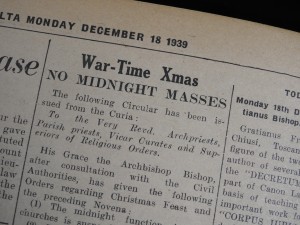 Even though the Maltese Islands were not yet directly involved in war, a foreboding atmosphere crept its way into the lives of people. As if matters were not yet miserable enough, a Bishop’s Circular which was published on The Times of Malta of 17 December 1939 declared that the Christmas midnight function in the churches was to be suspended. The Novena and feast functions could be celebrated from 4:00am onwards provided that no lights were visible from the outside. Those churches which required singers and musicians from far places for the early Christmas function had to apply to the Commissioner of Police for the necessary permits to travel. While it was permissible to give a small sign to the faithful by the ringing of bells for the function of the Novena and Christmas Eve, this had to be done according to predetermined rules.
Even though the Maltese Islands were not yet directly involved in war, a foreboding atmosphere crept its way into the lives of people. As if matters were not yet miserable enough, a Bishop’s Circular which was published on The Times of Malta of 17 December 1939 declared that the Christmas midnight function in the churches was to be suspended. The Novena and feast functions could be celebrated from 4:00am onwards provided that no lights were visible from the outside. Those churches which required singers and musicians from far places for the early Christmas function had to apply to the Commissioner of Police for the necessary permits to travel. While it was permissible to give a small sign to the faithful by the ringing of bells for the function of the Novena and Christmas Eve, this had to be done according to predetermined rules.Albeit the continuous warnings and pleas to adhere strictly to the black-out orders, it seemed that not everyone was following the rules. An announcement on The Times of Malta of the 20 December 1939 issued by the Lieutenant’s Government Office advised the public that the black-out on the night of December 15-16 was not entirely satisfactory, and that there were several lights showing in the Valletta, Sliema, Hamrun, Cospicua and Naxxar districts. Several lights were only put out as aircraft passed overhead. This notice pointed out also that a section of the public could still have been unaware of the black-out rules since they seemed to have been published only on The Times of Malta and Il-Berqa newspapers. Illiterate persons would therefore have had no way of being forewarned except by hearsay. Therefore, a siren warning which was different from the Air-Raid alarm signal, was recommended to be given throughout the islands at sunset.
Letters by readers in the Correspondence section of The Times of Malta of the 20 and 21 December 1939 vent their frustration and contempt at those who were not taking these black-out precautions seriously:
“Many people rather irresponsibly remark that they do not quite see the use of strict black-outs when Germany is at such a distance away. The reply is that precaution is better than cure. I am sure that these people will think very different if they find one day a German bomb dropping at their door-step or in their backyard, just because some stray lights guided an enemy to an objective.” Signed ‘Common-Sense’.
“I am sure that a number of law-abiding citizens in these islands feel that the time has come for coercion to replace coaxing. Those people who scorn to comply with reasonable regulations are either knaves or fools and most dangerous to the community in war time; they should be under lock and key for the duration of the war: either in jail or in a lunatic asylum. The pathetic appeals made by the authorities are becoming nauseating.” Signed Lieutenant Colonel (retired) H. M Marshall.
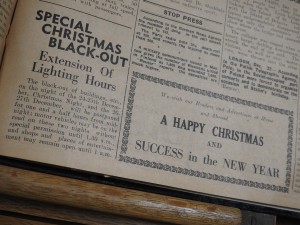 Special Black-Out arrangements for Christmas and New Year, published on The Times of Malta of the 23 and 30 December 1939, informed the public that the black-out of buildings on the nights of 24 – 27 December and 30 December – 1 January were to be postponed for one and a half hours from midnight. On these nights, motor vehicles were allowed on the road without requiring special permission until 1:30am, and shops and places of entertainment could remain open until 1:00am.
Special Black-Out arrangements for Christmas and New Year, published on The Times of Malta of the 23 and 30 December 1939, informed the public that the black-out of buildings on the nights of 24 – 27 December and 30 December – 1 January were to be postponed for one and a half hours from midnight. On these nights, motor vehicles were allowed on the road without requiring special permission until 1:30am, and shops and places of entertainment could remain open until 1:00am.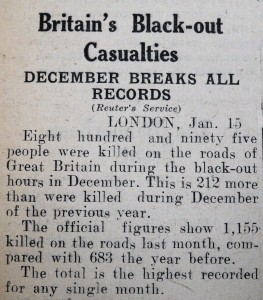 Possibly few had considered that light could be their enemy until it became essential to extinguish it. There was no mention of accidents or fatalities due to the black-out on the Islands in the December’s Times of Malta newspapers. However, reports from Great Britain relating to the high increase in road fatalities during the night were quite shocking. On 13 December 1939, the British Official Press stated that road fatalities had increased considerably from September to November. Yet the worst scenario took place in December, as reported by the Reuter’s Service on 16 January 1940, when 895 people were killed on the roads of Great Britain during the black-out hours. This was 212 more than those who were killed during December of the previous year.
Possibly few had considered that light could be their enemy until it became essential to extinguish it. There was no mention of accidents or fatalities due to the black-out on the Islands in the December’s Times of Malta newspapers. However, reports from Great Britain relating to the high increase in road fatalities during the night were quite shocking. On 13 December 1939, the British Official Press stated that road fatalities had increased considerably from September to November. Yet the worst scenario took place in December, as reported by the Reuter’s Service on 16 January 1940, when 895 people were killed on the roads of Great Britain during the black-out hours. This was 212 more than those who were killed during December of the previous year.This was surely a strange Christmas to the Maltese people who are accustomed to celebrate these days in a profuse way. Although through no fault of their own, they were involved in war and they had to adapt to war conditions. Alas, much worse was yet to come.
(This article was published in the Christmas Times magazine issued with The Times of Malta dated 13 December 2017)
-
Long shell life
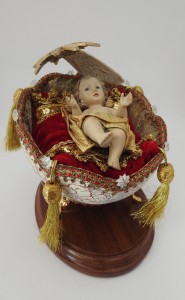 Although during the Christmas season, it is customary to see statues of baby Jesus in a manger or in a crib, in Candice Fava’s shop New EGGsperience, the holy child would be seen resting in a decorated eggshell.
Although during the Christmas season, it is customary to see statues of baby Jesus in a manger or in a crib, in Candice Fava’s shop New EGGsperience, the holy child would be seen resting in a decorated eggshell.“I love to create unique hand-made objects and this craft of eggshell decoration has provided me with the opportunity to have my own niche market,” Fava explains.
Fava was raised on a farm in Australia, where her family sold eggs. They had several clients but one particular client intrigued Fava since she regularly purchased a substantial quantity of eggs.
“One day I decided to ask her why she always needed so many eggs and she promised that the next time she called at our farm, she would bring me a gift to show me. I felt deeply curious and I awaited her next visit with much anticipation. Eventually, she brought me a little jewel box adorned with lovely fabrics and accessories. I could not believe that she had actually made it with one of the eggs from our farm!”
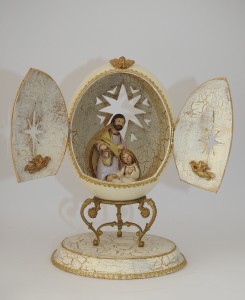 Fava was so fascinated with this idea that she decided to learn this craft. At the farm, she had all the eggs that she required and in time she learnt how to clean them without breaking them. Soon, she was producing her own eggshell decorations.
Fava was so fascinated with this idea that she decided to learn this craft. At the farm, she had all the eggs that she required and in time she learnt how to clean them without breaking them. Soon, she was producing her own eggshell decorations.“The first item I made was a jewel box which I painted with bright nail polish. I was so delighted when I saw it ready! Today I realize that it wasn’t much but it is still very dear to me as it reminds me from where it all started.”
Along the years, eggshell decoration became an integral part of Fava’s life. Which explains why she was surprised when she came over to Malta and realized that this craft was totally unknown on the island.
“It was hard at first to find the necessary materials to work with. However, my husband Ivan helped me to locate some local farms which could provide me with eggs. He also assisted me in the cleaning and sterilization of the eggshells.”
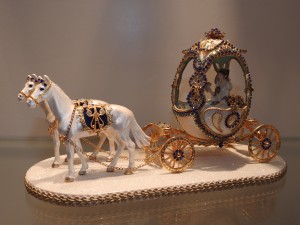 Initially she decorated eggshells for her personal enjoyment. Then she began to give them out as gifts to her friends.
Initially she decorated eggshells for her personal enjoyment. Then she began to give them out as gifts to her friends.“My friends were delighted with these eggshell decorations since they had never seen anything like them before. Soon they were asking me to make some more creations for them so that they could give them as presents to others. It was only a matter of time until I confirmed that there was a demand for such products.”
Ultimately, people’s positive reactions to her craft led her to open her own shop in Zabbar.
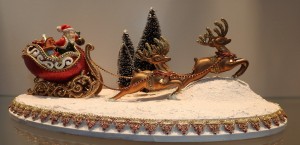 “By then, I had produced so many various eggshell decorations that I had no difficulty to fill the shop with my creations. Each time that new clients come in, it is charming to see their incredulity that so many exquisite things can be made from common fragile eggshells.”
“By then, I had produced so many various eggshell decorations that I had no difficulty to fill the shop with my creations. Each time that new clients come in, it is charming to see their incredulity that so many exquisite things can be made from common fragile eggshells.”Nowadays, the Favas have located foreign suppliers who are able to furnish them with quantities of ready-made cleaned and sterilized eggshells. Moreover, they have also managed to establish contacts with suppliers of other materials with which the eggshells are decorated.
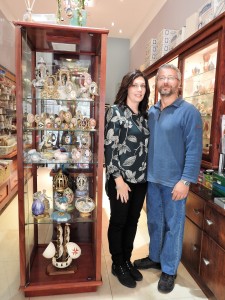 “My husband supports me a lot and helps me to come out with new ideas. Along the years, he too became enthusiastic about this work and now he is able to make his own creations.”
“My husband supports me a lot and helps me to come out with new ideas. Along the years, he too became enthusiastic about this work and now he is able to make his own creations.”A wide range of differently decorated eggshells which are ideal as gifts for various occasions are displayed at their shop. However, a few of them are not for sale.
“When we join forces, we create the best decorations,” the two agree. “The collaboration of ideas lead to exclusive objects which become difficult to part from. Some of them, such as the lamp shade, the handbag set and the sea vessel, are cherished objects and we have won prestigious awards for them at local national craft competitions. Such works provide us also with the opportunity to combine different materials and crafts like woodwork and eggshell decoration. Our imagination has no limit, however we are restrained with the eggshells’ curvatures, although we take that as part of the challenge.”
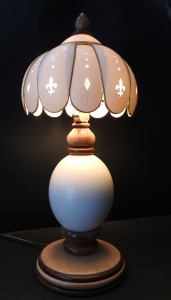 Even though all of the creations may serve as decorations, some of them also have their own practical use, acting as exotic containers, wearable accessories or light fittings.
Even though all of the creations may serve as decorations, some of them also have their own practical use, acting as exotic containers, wearable accessories or light fittings.“Besides selling our creations from my shop, I also participate in several fairs and exhibitions and therefore more people are getting to know about this craft. Presently I am also taking part in the program Niskata which airs on TVM. Yet there is still much more to do to create more awareness.”
“It is great to see how far a simple hobby can take you. Little by little, all my family has become involved in this craft. In fact, my daughter is already coming up with her own designs and creations and my little son is showing interest too.”
In these last years, Fava has also dedicated herself to teach this craft to all those who are interested, both children and adults. She has also furnished her shop with all the necessary materials including eggshells of various sizes, cut eggshells, acrylic paints, stands, bases and a multitude of other items.
As Christmas time approaches, the two explore the possibility of new designs and ideas in order to come out with original creations which relate to this theme.
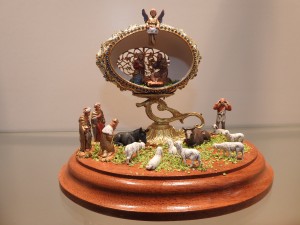 “We are always dreaming of what we are going to do next. We work with all sorts of eggshells, starting with the smallest ones of love-birds and parrots, and moving on to larger ones such as those of pigeons, quails, ducks, geese, emu, rhea and ostrich. The geese’s eggs are the most practical because of their size and shape. Other eggs are relished for their natural particular characteristics such as the blackish colour of the rhea eggs and the large shape and pearly shade of the ostrich eggs.”
“We are always dreaming of what we are going to do next. We work with all sorts of eggshells, starting with the smallest ones of love-birds and parrots, and moving on to larger ones such as those of pigeons, quails, ducks, geese, emu, rhea and ostrich. The geese’s eggs are the most practical because of their size and shape. Other eggs are relished for their natural particular characteristics such as the blackish colour of the rhea eggs and the large shape and pearly shade of the ostrich eggs.”“Christmas brings a lot of joy and memories. This festive season opens up a whole new world to create related items with baby Jesus statues, cribs, angels, Father Christmas, reindeers, sparkles and a whole range of bright colours. We love to reflect the warm meaning of Christmas in our works.”
-
KONTINENT IEĦOR
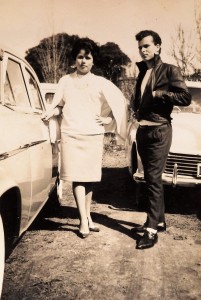 “F’żogħżiti l-Awstralja kienet meqjusa bħala dinja tal-ħolm, dinja ta’ opportunitajiet li ma kellniex f’pajjiżna. Ironikament it-tmiem tat-Tieni Gwerra Dinjija nissel problema ta’ qgħad kbir fil-gżejjer Maltin u speċjalment iż-żgħażagħ bdew jaħarquhom saqajhom biex jitilqu minn fuq din l-art ħalli jfittxu xortihom x’imkien ieħor. Jien kont waħda minn dawk iż-żgħażagħ li flimkien ma’ żewġ ħuti erħejnielha lejn dan il-kontinent b’sens qawwi ta’ avventura. Imma ġaladarba sibt ruħi hemm irrealizzajt x’kont napprezza tassew f’ħajti u dan kollu kien qiegħed f’art twelidi.”
“F’żogħżiti l-Awstralja kienet meqjusa bħala dinja tal-ħolm, dinja ta’ opportunitajiet li ma kellniex f’pajjiżna. Ironikament it-tmiem tat-Tieni Gwerra Dinjija nissel problema ta’ qgħad kbir fil-gżejjer Maltin u speċjalment iż-żgħażagħ bdew jaħarquhom saqajhom biex jitilqu minn fuq din l-art ħalli jfittxu xortihom x’imkien ieħor. Jien kont waħda minn dawk iż-żgħażagħ li flimkien ma’ żewġ ħuti erħejnielha lejn dan il-kontinent b’sens qawwi ta’ avventura. Imma ġaladarba sibt ruħi hemm irrealizzajt x’kont napprezza tassew f’ħajti u dan kollu kien qiegħed f’art twelidi.”Trabbejt nisma’ dawn ir-rakkonti t’ommi Angela Busuttil peress li spiss kienet issemmi ż-żminijiet li għexet fl-Awstralja. Barra minn hekk, minħabba li wieħed minn ħutha kien għadu jgħix hemmhekk, mhux darba u tnejn li n-nanna Fortunata Abela u z-zija Gracie Cilia talbuni biex niktbilhom xi ittra ħalli jibgħatuhielu. Niftakar li kienu ittri li kollha jibdew l-istess “Għażiż Ġużeppi, Vera u t-tfal, nispera li tinsabu tajbin bħal kif ninsabu aħna għall-grazzja t’Alla”.
Kont tgħallimt nikteb l-introduzzjoni bl-amment u kont nitbissem meta nara li dejjem kienu jiktbulu l-istess ħaġa. Il-bqija tal-ittri kienu jikkonsistu f’dak li jkunu għaddew minnu matul dawk l-aħħar ġimgħat jew dwar xi ħaġa li kienu beħsiebhom jagħmlu. Ta’ tifla li kont, ftit stajt napprezza dawk l-ittri ripetittivi. Kellhom jgħaddu ħafna snin qabel fhimt kemm kienu jfissru għalihom dawk il-karti ċelesti li kont niktbilhom l-ittri fuqhom u għaliex kienu jistennew ir-risposti tagħhom tant b’ħerqa. Ir-raġuni kienet dejjem spjegata ċara fir-rakkonti t’ommi. Imma kultant jekk ma ġġarrabx, għajnejk ma jinfetħux. Illum li jiena sirt omm u li s-snin gerrbu fuq ommi wkoll, kapaċi nixtarr aktar.
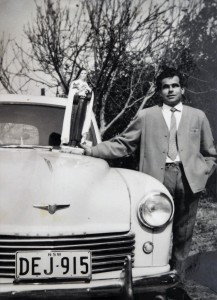 “Kien ħija l-kbir Ġużeppi li beda jħeġġiġna biex immorru l-Awstralja. Hu kien diġà miżżewweġ u kellu l-familja tiegħu. Jien kien għad kelli 17 il-sena, ommi ma riditnix immur, u missieri ma ried jagħti b’xejn il-kunsens tiegħu biex insiefer. Imma meta għalaqt it-18 il-sena, Ġużeppi rnexxielu jikkonvinċi lil missieri li kien ser jieħu ħsiebi hu. Wegħdu li ser iġib ruħu daqs li kieku kien it-tieni missier tiegħi u kelmtu żammha għax id-dixxiplina tiegħu kienet iebsa mhux ħażin!”
“Kien ħija l-kbir Ġużeppi li beda jħeġġiġna biex immorru l-Awstralja. Hu kien diġà miżżewweġ u kellu l-familja tiegħu. Jien kien għad kelli 17 il-sena, ommi ma riditnix immur, u missieri ma ried jagħti b’xejn il-kunsens tiegħu biex insiefer. Imma meta għalaqt it-18 il-sena, Ġużeppi rnexxielu jikkonvinċi lil missieri li kien ser jieħu ħsiebi hu. Wegħdu li ser iġib ruħu daqs li kieku kien it-tieni missier tiegħi u kelmtu żammha għax id-dixxiplina tiegħu kienet iebsa mhux ħażin!”“Bilkemm niftakar kif saru l-preparazzjonijiet bil-ġenn li kelli biex nitlaq. Bsart li ser nimmissja lill-ġenituri tiegħi u lil ħuti l-oħra. Imma ta’ żagħżugħa li kont neħħejt dawk il-ħsibijiet minn quddiem għajnejja u minflok intfajt noħlom dwar dik l-opportunità sabiħa li ngħix u naħdem f’pajjiż ieħor. Dakinhar li tlaqna biex nibdew dan il-vjaġġ, ommi għafsitni magħha u reġgħet qaltli li ma xtaqitnix immur. Il-ħsieb tal-firda minni kien diġà qed ikiddha iżda meta ratni konvinta biex insiefer, talbitni biex ma ninsihiex u biex ma nibqax hemm. Madanakollu jien moħħi kien biss f’dak il-vapur sabiħ li kien qed jistenniena biex jeħodna lejn l-Awstralja.”
“Għal dan il-vjaġġ konna jiena, ħija Indrì u ħija Ġużeppi bil-familja tiegħu. Morna b’vapur lussuż, l-Angelina Lauro. Il-kmamar kienu spazzjużi u komdi. Ħallasna biss Lm10 kull wieħed biex vjaġġajna għal xahar sħiħ fuqu. Kien hemm ħafna Maltin oħra u kollha konna stmati tajjeb ħafna. Il-vjaġġ kien interessanti u pjaċevoli sakemm wasalna f’Port Said fil-Baħar l-Aħmar u nqbadna f’maltemp kbir. F’daqqa waħda kollox beda jitkaxkar ‘l hawn u ‘l hemm: l-imwejjed, is-siġġijiet, is-sodod. Tal-biża’! Ħafna mill-passiġġieri kellhom jingħataw il-mediċini għax ħassewhom ma jifilħux. Lili kieku m’għamilli xejn il-baħar imma ħassejtni tterrorizzata. Wara dakinhar bosta kienu b’qalbhom imtaqtqa kif ser naslu l-Awstralja għax il-vjaġġ donnu ma ried jispiċċa qatt! Niftakar li l-klieb il-baħar baqgħu jsegwuna matul il-vjaġġ kollu, dejjem jistennew lill-ħaddiema ta’ fuq il-vapur biex jarmu l-fdalijiet tal-ikel fil-baħar.”
 “Malli wasalna Melbourne laqagħna temp imsaħħab u xejn ma ħadt grazzja mal-post. Xi ħbieb li kienu qed jistennewna ħaduna Adelaide li kien jumejn bogħod bil-karozza. Hemmhekk għamilna ftit taż-żmien. Kien post kwiet u ma tantx kien hemm xogħol. Tlaqna u morna Sydney, niġru minn xogħol għall-ieħor. Niftakar li l-ewwel darba li mort għax-xogħol, tlajt fi tren u marret għajni bija, u t-tren baqgħet sejra bija f’post ieħor. Tgħidx kemm bżajt meta stenbaħt u ma kontx naf x’se naqbad nagħmel. Tinkwieta għax la ma tkunx taf il-post, ma tafx ma’ min tista’ tiltaqa’. Ħdimt f’żewġ fabbriki imma ma nista’ ninsa qatt kemm laqgħuni b’mod sabiħ fl-ewwel fabbrika li dħalt fiha. Kont ilni naħdem hemm ftit ġranet biss u hekk kif skoprew li kont għadni kif għalaqt it-18 il-sena għamluli surprise party u tgħidx kemm tawni rigali! Lanqas wara għaxar snin xogħol ma jagħmlulek hekk f’Malta!”
“Malli wasalna Melbourne laqagħna temp imsaħħab u xejn ma ħadt grazzja mal-post. Xi ħbieb li kienu qed jistennewna ħaduna Adelaide li kien jumejn bogħod bil-karozza. Hemmhekk għamilna ftit taż-żmien. Kien post kwiet u ma tantx kien hemm xogħol. Tlaqna u morna Sydney, niġru minn xogħol għall-ieħor. Niftakar li l-ewwel darba li mort għax-xogħol, tlajt fi tren u marret għajni bija, u t-tren baqgħet sejra bija f’post ieħor. Tgħidx kemm bżajt meta stenbaħt u ma kontx naf x’se naqbad nagħmel. Tinkwieta għax la ma tkunx taf il-post, ma tafx ma’ min tista’ tiltaqa’. Ħdimt f’żewġ fabbriki imma ma nista’ ninsa qatt kemm laqgħuni b’mod sabiħ fl-ewwel fabbrika li dħalt fiha. Kont ilni naħdem hemm ftit ġranet biss u hekk kif skoprew li kont għadni kif għalaqt it-18 il-sena għamluli surprise party u tgħidx kemm tawni rigali! Lanqas wara għaxar snin xogħol ma jagħmlulek hekk f’Malta!”“L-Awstralja kienet tgħaġġibni bil-kobor tagħha. Kienet sabiħa ħafna b’siġar twal u b’għelieqi spazzjużi u b’toroq li ma jispiċċaw qatt. Ġieli rajt ukoll xi annimali tal-post, l-aktar il-kangaroos kbar li mhux darba u tnejn fettlilhom jintasbu f’nofs ta’ triq u ma jkunu jridu jwarrbu b’xejn biex ngħaddu bil-karozza. Konna noqogħdu Greenacre fejn krejna dar pjuttost kbira. Ma tantx kien hemm Maltin. Kellna familja aboriġina fost il-ġirien tagħna u t-tfal tagħhom kienu jiġu jilgħabu magħna. Madwarna kienu joqgħodu nies minn kull pajjiż.”
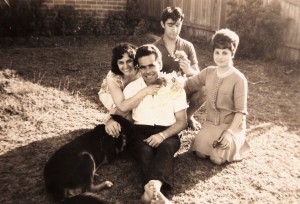 “Kien hemm okkażżjonijiet fejn konna noħorġu xi ftit. Niftakar li ġieli morna naraw ir-wrestling. Kien ikollna l-ġellied favorit tagħna u erħilna ngħajjtu kemm nifilħu meta jibda jaqla’ xi daqqtejn sew mingħand l-ieħor. Konna nidħlu b’vuċi tajba u noħorġu maħnuqin imma konna nieħdu gost. Dejjem bqajt bil-kurżità jekk kienux ikunu qed jiġġieldu veru jew le. Tant kienu jaqilgħu li ma stajtx nemmen li kienu jagħtu bis-serjetà!”
“Kien hemm okkażżjonijiet fejn konna noħorġu xi ftit. Niftakar li ġieli morna naraw ir-wrestling. Kien ikollna l-ġellied favorit tagħna u erħilna ngħajjtu kemm nifilħu meta jibda jaqla’ xi daqqtejn sew mingħand l-ieħor. Konna nidħlu b’vuċi tajba u noħorġu maħnuqin imma konna nieħdu gost. Dejjem bqajt bil-kurżità jekk kienux ikunu qed jiġġieldu veru jew le. Tant kienu jaqilgħu li ma stajtx nemmen li kienu jagħtu bis-serjetà!”“Il-kobor tal-post kien jaqtgħalna qalbna biex nimirħu ‘l bogħod. U l-biċċa l-kbira minn ħajjitna kienet iddedikata biss għax-xogħol. Agħar minn hekk, ommna spiss kienet tibgħatilna l-ittri jew xi casette irrekordjatha bil-vuċi tagħha fejn kienet twissina biex noqogħdu attenti ħalli ma nweġġgħux u b’mod speċjali, biex ma niżżewġux hemmhekk. “Fittxu ejjew ‘l hawn, ejjew lura,” kienet dejjem tirrepeti. Kemm tiflaħ tisma’ kliem bħal dan?”
“Ma domnix ma bdejna niddejqu u nixxenqu biex nirritornaw lejn pajjiżna fejn fiċ-ċokon tiegħu kellna dak kollu li ridna. Il-problema kienet li għalkemm biex morna l-Awstralja kellna nħallsu biss Lm10 kull wieħed, biex naqbdu vapur lura lejn Malta l-prezz kien Lm250 kull ras. Għamilna sentejn u nofs ngħixu hemm sakemm irnexxielna nfaddlu biżżejjed flus għalina kollha. Ġejna lura Malta bil-vapur Achille Lauro u mill-ġdid domna xahar nivvjaġġaw.”
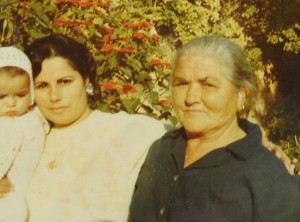 “Kont kuntenta li rajt pajjiż ieħor imma ddispjaċini ħafna li tlaqt il-familja tiegħi. Ħadt ir-ruħ hekk kif wasalna lura Malta u rajthom kollha qawwijin u sħaħ. Tgħidx kemm għannaqthom u kien f’dak il-ħin li rrealizzajt kemm kont immissjajthom. “Ma nerġax nitla’ ma. Ma nerġax nitilqek,” wegħedt lil ommi hekk kif għafastha miegħi. U kelmti żammejtha.”
“Kont kuntenta li rajt pajjiż ieħor imma ddispjaċini ħafna li tlaqt il-familja tiegħi. Ħadt ir-ruħ hekk kif wasalna lura Malta u rajthom kollha qawwijin u sħaħ. Tgħidx kemm għannaqthom u kien f’dak il-ħin li rrealizzajt kemm kont immissjajthom. “Ma nerġax nitla’ ma. Ma nerġax nitilqek,” wegħedt lil ommi hekk kif għafastha miegħi. U kelmti żammejtha.”Wara xi snin, ħuha Ġużeppi reġa’ tela’ l-Awstralja bil-familja tiegħu fejn dam għal żmien twil sakemm eventwalment, ta’ età kbira rritorna Malta. Illum m’għadnix nikteb l-ittri fuq il-karti ċelesti. In-nanna, iz-zija u z-ziju ħallewna u issa fadal biss il-memorja tagħhom.
(Dan l-artiklu ġie ppubblikat fis-Senior Times li ħareġ mal-ġurnal The Times of Malta tas-17 ta’ Novembru 2017)
-
Temmen jekk trid
Soqt għal għonq it-triq lejn il-Mellieħa taħt sema tqila bi sħab iswed ċomb u tlabt bil-qalb li nilħaq nasal qabel din ifettlilha tiftaħ bwiebha… U oħroġ il-għaġeb, hekk kif missejt mat-tarġa tal-bieb tas-Santwarju tal-Madonna tal-Mellieħa, inħoss l-ewwel qatriet qawwija nieżla fuq dahri, li mill-ewwel inbidlu f’xita qalila, hekk kif dħalt ġewwa għall-kenn ta’ dan ir-rifuġju sagru. Għajnejja mill-ewwel waqgħu fuq dak li kont mort għalih – in-numru kbir ta’ kwadri ex-voto mwaħħla mal-ħitan. U hekk kif rajt lil Jimmy Muscat riesaq isellimli, ma domtx ma ntbaħt li għal darb’oħra, kont ser niskopri xi erbgħa stejjer interessanti mhux ħażin.
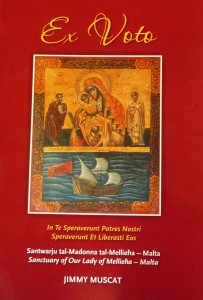 Infatti, kien proprju l-ktieb ta’ dan l-awtur ‘Ex-Voto: Santwarju tal-Madonna tal-Mellieħa’ li ġibidni lejn dan il-post. F’dan il-ktieb li hu wkoll speċi ta’ katalogu, Jimmy jippreżenta ġabra tal-110 kwadru ex-voto li rnexxielhom isalvaw sal-ġurnata ta’ llum f’dan is-santwarju, fejn 64 minnhom għandhom tema marittima, filwaqt li l-oħrajn juru xeni ta’ mard u inċidenti li n-nies irnexxielhom ifiequ minnhom. Naturalment, kull kwadru għandu l-istorja partikolari tiegħu imma mhux kull wieħed fih id-dettalji ta’ dan ir-rakkont miktubin fuqu. Uħud mill-kwadri għandhom xi deskrizzjoni ta’ dak li kien seħħ biex saret din il-pittura, oħrajn għandhom biss id-data mniżżla fuqhom, filwaqt li numru ieħor juru l-ittri V.F.G.A. (Votum Fecit Gratiam Accepit) li jfisser li l-wegħda ntalbet u l-grazzja nqalgħet. Fl-istess ħin, anki jekk numru ta’ xogħolijiet m’għandhom l-ebda kitba fuqhom, jekk wieħed jiflihom sewwa, xorta waħda jista’ jinnota xi dettalji li kapaċi jagħtuh indikazzjoni tal-kuntest tagħhom, bħal ngħidu aħna mit-tip ta’ xwieni, mill-bnadar li jkollhom fuqhom, mill-inħawi li jidhru fl-isfond, mill-ilbies tan-nies u mill-għamara tad-djar. Għaldaqstant, dawn l-ex-voto mhumiex biss xhieda tat-twemmin tal-popli matul iż-żminijiet imma anki riflessjoni tal-istorja u tas-soċjetajiet differenti li ħallew dan il-wirt tagħhom f’dan il-post.
Infatti, kien proprju l-ktieb ta’ dan l-awtur ‘Ex-Voto: Santwarju tal-Madonna tal-Mellieħa’ li ġibidni lejn dan il-post. F’dan il-ktieb li hu wkoll speċi ta’ katalogu, Jimmy jippreżenta ġabra tal-110 kwadru ex-voto li rnexxielhom isalvaw sal-ġurnata ta’ llum f’dan is-santwarju, fejn 64 minnhom għandhom tema marittima, filwaqt li l-oħrajn juru xeni ta’ mard u inċidenti li n-nies irnexxielhom ifiequ minnhom. Naturalment, kull kwadru għandu l-istorja partikolari tiegħu imma mhux kull wieħed fih id-dettalji ta’ dan ir-rakkont miktubin fuqu. Uħud mill-kwadri għandhom xi deskrizzjoni ta’ dak li kien seħħ biex saret din il-pittura, oħrajn għandhom biss id-data mniżżla fuqhom, filwaqt li numru ieħor juru l-ittri V.F.G.A. (Votum Fecit Gratiam Accepit) li jfisser li l-wegħda ntalbet u l-grazzja nqalgħet. Fl-istess ħin, anki jekk numru ta’ xogħolijiet m’għandhom l-ebda kitba fuqhom, jekk wieħed jiflihom sewwa, xorta waħda jista’ jinnota xi dettalji li kapaċi jagħtuh indikazzjoni tal-kuntest tagħhom, bħal ngħidu aħna mit-tip ta’ xwieni, mill-bnadar li jkollhom fuqhom, mill-inħawi li jidhru fl-isfond, mill-ilbies tan-nies u mill-għamara tad-djar. Għaldaqstant, dawn l-ex-voto mhumiex biss xhieda tat-twemmin tal-popli matul iż-żminijiet imma anki riflessjoni tal-istorja u tas-soċjetajiet differenti li ħallew dan il-wirt tagħhom f’dan il-post.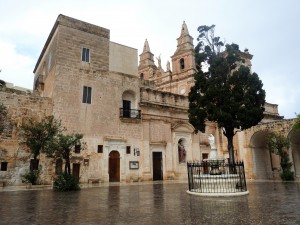 Imma, ejja nimxu lura fis-snin, lejn il-bidu ta’ dan is-sit… Skont l-istudji fl-istorja tal-Mellieħa li għamel Jimmy, jidher li qabel is-17 il-seklu, l-inħawi ta’ fejn illum jinsab dan is-santwarju, kienu biss għerien naturali. Minħabba l-attakki spissi tal-pirati li kienu jsibu l-bajja tal-Mellieħa mira faċli biex minnha jitilgħu l-art, l-inħawi tal-madwar kienu meqjusa bħala perikolużi wisq biex wieħed jgħix fihom. Probabbilment kien hemm xi wħud li kienu jazzardaw jgħixu f’xi għerien tal-madwar, imma dawn kienu jafu li kienu qed jilgħabu xortihom kuljum hemmhekk. Intant, skont xi dokumenti li nstabu, jidher li fl-1640 kien beda t-tħaffir tal-inħawi fejn illum jinsab is-santwarju. Iżda mill-ġdid, minħabba l-invażjonijiet minn perjodu għall-ieħor tal-pirati, intilfu ħafna dokumenti sinifikanti minn dan il-post u fil-fatt il-manuskritti li għandna llum jibdew mit-18 il-seklu.
Imma, ejja nimxu lura fis-snin, lejn il-bidu ta’ dan is-sit… Skont l-istudji fl-istorja tal-Mellieħa li għamel Jimmy, jidher li qabel is-17 il-seklu, l-inħawi ta’ fejn illum jinsab dan is-santwarju, kienu biss għerien naturali. Minħabba l-attakki spissi tal-pirati li kienu jsibu l-bajja tal-Mellieħa mira faċli biex minnha jitilgħu l-art, l-inħawi tal-madwar kienu meqjusa bħala perikolużi wisq biex wieħed jgħix fihom. Probabbilment kien hemm xi wħud li kienu jazzardaw jgħixu f’xi għerien tal-madwar, imma dawn kienu jafu li kienu qed jilgħabu xortihom kuljum hemmhekk. Intant, skont xi dokumenti li nstabu, jidher li fl-1640 kien beda t-tħaffir tal-inħawi fejn illum jinsab is-santwarju. Iżda mill-ġdid, minħabba l-invażjonijiet minn perjodu għall-ieħor tal-pirati, intilfu ħafna dokumenti sinifikanti minn dan il-post u fil-fatt il-manuskritti li għandna llum jibdew mit-18 il-seklu.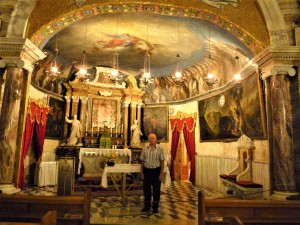 Il-ħaġa tal-iskantament hija illi għalkemm dawn l-inħawi kienu meqjusa tat-twegħir, bosta pellegrini xorta waħda kienu jirriskjaw ħajjithom sabiex iżuru wieħed minn dawn l-għerien li kien meqjus bħala sagru minħabba xbieha partikolari li kellu fuq il-ħajt. Dan għaliex it-tradizzjoni tgħid li din ix-xbieha tal-Madonna bil-Bambin f’idejha kien pinġiha fuq il-blat San Luqa, meta fis-sena 60W.K. huwa kien qiegħed f’Malta flimkien ma’ sieħbu San Pawl, u għalhekk din kienet ikkunsidrata bħala mirakoluża. Tradizzjoni oħra relatata ma’ dan il-post tirrakkonta illi fis-sena 409W.K. grupp ta’ isqfijiet kienu żaru dan l-għar u meta raw din it-tpinġija ta’ San Luqa mal-blat u t-twemmin sod li kien hemm marbut magħha, huma ddeċidew li jikkonsagraw dan il-post bħala knisja.
Il-ħaġa tal-iskantament hija illi għalkemm dawn l-inħawi kienu meqjusa tat-twegħir, bosta pellegrini xorta waħda kienu jirriskjaw ħajjithom sabiex iżuru wieħed minn dawn l-għerien li kien meqjus bħala sagru minħabba xbieha partikolari li kellu fuq il-ħajt. Dan għaliex it-tradizzjoni tgħid li din ix-xbieha tal-Madonna bil-Bambin f’idejha kien pinġiha fuq il-blat San Luqa, meta fis-sena 60W.K. huwa kien qiegħed f’Malta flimkien ma’ sieħbu San Pawl, u għalhekk din kienet ikkunsidrata bħala mirakoluża. Tradizzjoni oħra relatata ma’ dan il-post tirrakkonta illi fis-sena 409W.K. grupp ta’ isqfijiet kienu żaru dan l-għar u meta raw din it-tpinġija ta’ San Luqa mal-blat u t-twemmin sod li kien hemm marbut magħha, huma ddeċidew li jikkonsagraw dan il-post bħala knisja.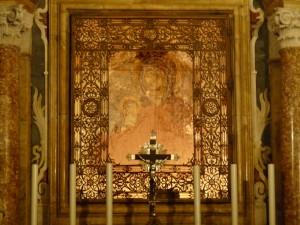 Li nafu fiż-żgur huwa li maż-żmien, inbena santwarju sħiħ madwar ikona li turi x-xbieha tal-Madonna bil-Bambin f’idha. Barra minn hekk inbnew ukoll xi kmamar għall-pellegrini fejn dawn setgħu jistrieħu ftit qabel jerħulha lura lejn l-abitat tagħhom. Sal-ġurnata ta’ llum, bosta pellegrini għadhom iżuru dan il-post biex jitolbu l-għajnuna tal-Madonna tal-Mellieħa quddiem din ix-xbieha. Min-naħa l-oħra, xi studjużi tal-arti għandhom ukoll interess f’din ix-xbieha peress li għad hemm diversi mistoqsijiet relatati magħha. Fosthom hu maħsub li l-ikona li qed naraw fil-preżent, kienet saret fit-13 il-seklu. Iżda mid-dehra taħt din it-tpinġija, hemm oħra ferm aktar antika minnha, minħabba li waqt li kien qed isirilha xi restawr, beda joħroġ xi fdal tad-deheb minn taħtha. Dan jindika l-possibilità li jista’ jkun hemm xbieha eqdem mgħottija b’dik preżenti. Sadanittant, minn dokumenti tal-visti pastorali li saru matul is-snin, Jimmy skopra li għal aktar minn darba, l-isqfijiet ta’ dawk il-perjodi kienu qed jinnutaw li x-xbieha tal-Madonna kienet qed tisfuma biż-żmien u għalhekk huma talbu biex titpinġa oħra fuqha sabiex il-pellegrini jkunu jistgħu jibqgħu jaraw u jidentifikaw max-xbieha tal-Madonna li għaliha kienu qed jiġu f’dan il-post.
Li nafu fiż-żgur huwa li maż-żmien, inbena santwarju sħiħ madwar ikona li turi x-xbieha tal-Madonna bil-Bambin f’idha. Barra minn hekk inbnew ukoll xi kmamar għall-pellegrini fejn dawn setgħu jistrieħu ftit qabel jerħulha lura lejn l-abitat tagħhom. Sal-ġurnata ta’ llum, bosta pellegrini għadhom iżuru dan il-post biex jitolbu l-għajnuna tal-Madonna tal-Mellieħa quddiem din ix-xbieha. Min-naħa l-oħra, xi studjużi tal-arti għandhom ukoll interess f’din ix-xbieha peress li għad hemm diversi mistoqsijiet relatati magħha. Fosthom hu maħsub li l-ikona li qed naraw fil-preżent, kienet saret fit-13 il-seklu. Iżda mid-dehra taħt din it-tpinġija, hemm oħra ferm aktar antika minnha, minħabba li waqt li kien qed isirilha xi restawr, beda joħroġ xi fdal tad-deheb minn taħtha. Dan jindika l-possibilità li jista’ jkun hemm xbieha eqdem mgħottija b’dik preżenti. Sadanittant, minn dokumenti tal-visti pastorali li saru matul is-snin, Jimmy skopra li għal aktar minn darba, l-isqfijiet ta’ dawk il-perjodi kienu qed jinnutaw li x-xbieha tal-Madonna kienet qed tisfuma biż-żmien u għalhekk huma talbu biex titpinġa oħra fuqha sabiex il-pellegrini jkunu jistgħu jibqgħu jaraw u jidentifikaw max-xbieha tal-Madonna li għaliha kienu qed jiġu f’dan il-post.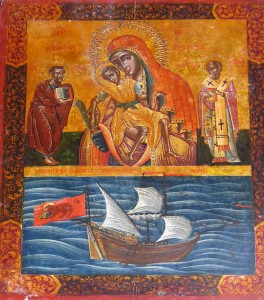 Hekk kif għajnejja ġrew fuq l-ammonti ta’ kwadri ex-voto li jmorru lura għal mijiet ta’ snin, fihom ilmaħt it-tama ta’ bosta individwi li akkost li kienu f’ibħra ‘l bogħod minn xtutna, talbiethom xorta waħda daret lejn il-Madonna li fiha huma kellhom l-akbar fiduċja – dik tas-Santwarju tal-Mellieħa. Iżda ma kienux biss il-Maltin li kienu jiggranfaw ma’ din il-karba għall-għajnuna divina ta’ din il-Madonna meta l-mewt kienet daqstant viċin! Infatti kienu ħafna l-individwi barranin li kienu rregalaw il-kwadri ex-voto tagħhom lil dan is-santwarju meta rritornaw qawwijin u sħaħ lejn pajjiżna. Fost dawn kien hemm il-ġeneral tal-flotta tal-Ordni, Fra Antonio Correa (Montenegro) li wiegħed u ta kwadru mill-isbaħ lill-Madonna tas-Santwarju tal-Mellieħa wara li x-xwieni li kien responsabbli minnhom inqabdu f’maltempata tal-biża’ waqt li kienu qed jaqsmu u jbaħħru qrib il-gżejjer ta’ Taranto fl-1678 u finalment irnexxielhom isalvaw. Ex-voto ieħor pjuttost kurjuż huwa dak li jidher proprju fil-qoxra tal-ktieb ta’ Jimmy fejn did-darba, il-Madonna li tidher fuq ix-xbieha tal-ex-voto, tixbaħ ħafna lill-Madonna tal-Monasteru ta’ Kykkos li jinsab f’Ċipru u għalhekk hija għal kollox differenti minn dik tal-Mellieħa. Għaldaqstant wieħed jistaqsi kif dan ix-xogħol ġie inkluż ma’ din il-kollezzjoni tas-santwarju? Kitba fuq dan l-ex-voto li tidher li hi ta’ lingwa antika Russa u Griega, taf tipprovdi xi indikazzjoni dwar din ir-raġuni, iżda s’issa ħadd għadu ma rnexxielu jiddeċifra x’hemm miktub.
Hekk kif għajnejja ġrew fuq l-ammonti ta’ kwadri ex-voto li jmorru lura għal mijiet ta’ snin, fihom ilmaħt it-tama ta’ bosta individwi li akkost li kienu f’ibħra ‘l bogħod minn xtutna, talbiethom xorta waħda daret lejn il-Madonna li fiha huma kellhom l-akbar fiduċja – dik tas-Santwarju tal-Mellieħa. Iżda ma kienux biss il-Maltin li kienu jiggranfaw ma’ din il-karba għall-għajnuna divina ta’ din il-Madonna meta l-mewt kienet daqstant viċin! Infatti kienu ħafna l-individwi barranin li kienu rregalaw il-kwadri ex-voto tagħhom lil dan is-santwarju meta rritornaw qawwijin u sħaħ lejn pajjiżna. Fost dawn kien hemm il-ġeneral tal-flotta tal-Ordni, Fra Antonio Correa (Montenegro) li wiegħed u ta kwadru mill-isbaħ lill-Madonna tas-Santwarju tal-Mellieħa wara li x-xwieni li kien responsabbli minnhom inqabdu f’maltempata tal-biża’ waqt li kienu qed jaqsmu u jbaħħru qrib il-gżejjer ta’ Taranto fl-1678 u finalment irnexxielhom isalvaw. Ex-voto ieħor pjuttost kurjuż huwa dak li jidher proprju fil-qoxra tal-ktieb ta’ Jimmy fejn did-darba, il-Madonna li tidher fuq ix-xbieha tal-ex-voto, tixbaħ ħafna lill-Madonna tal-Monasteru ta’ Kykkos li jinsab f’Ċipru u għalhekk hija għal kollox differenti minn dik tal-Mellieħa. Għaldaqstant wieħed jistaqsi kif dan ix-xogħol ġie inkluż ma’ din il-kollezzjoni tas-santwarju? Kitba fuq dan l-ex-voto li tidher li hi ta’ lingwa antika Russa u Griega, taf tipprovdi xi indikazzjoni dwar din ir-raġuni, iżda s’issa ħadd għadu ma rnexxielu jiddeċifra x’hemm miktub.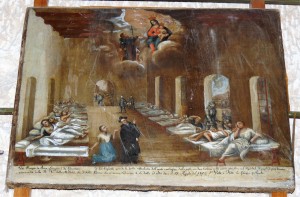 Kwadri oħra, daqstant emozzjonali, juru persuni jew familji qed jitolbu bil-ħrara għall-qraba morda tagħhom u mill-ġdid hawnhekk, apparti li f’dawn il-wegħdi naraw is-simboli tat-twemmin, fl-istess ħin għandna stampa ċara tas-sitwazzjoni tas-saħħa li kien hawn f’pajjiżna matul is-snin, fejn fosthom uħud kienu mardu bil-malarja, bit-tuberkolożi, bil-pneumonia, bil-ġidri, bil-kolera, bid-difterite u anki bil-pesta. Fost dawn, laqgħatni ħafna kwadru minnhom li juri xena ta’ sptar tal-pesta tal-1813. Dan il-kwadru kien wiegħda magħmulha minn Anna Lungaro u l-qarib tagħha Giovanni Portelli peress li hi kienet mardet bil-marda tal-pesta u permezz tal-ħniena divina tal-Madonna tal-Mellieħa, nhar it-Tlieta, 17 t’Awwissu 1813, hi u tnejn oħra biss mill-160 persuna li kien hemm fl-isptar tal-pesta, irnexxielhom isalvaw.
Kwadri oħra, daqstant emozzjonali, juru persuni jew familji qed jitolbu bil-ħrara għall-qraba morda tagħhom u mill-ġdid hawnhekk, apparti li f’dawn il-wegħdi naraw is-simboli tat-twemmin, fl-istess ħin għandna stampa ċara tas-sitwazzjoni tas-saħħa li kien hawn f’pajjiżna matul is-snin, fejn fosthom uħud kienu mardu bil-malarja, bit-tuberkolożi, bil-pneumonia, bil-ġidri, bil-kolera, bid-difterite u anki bil-pesta. Fost dawn, laqgħatni ħafna kwadru minnhom li juri xena ta’ sptar tal-pesta tal-1813. Dan il-kwadru kien wiegħda magħmulha minn Anna Lungaro u l-qarib tagħha Giovanni Portelli peress li hi kienet mardet bil-marda tal-pesta u permezz tal-ħniena divina tal-Madonna tal-Mellieħa, nhar it-Tlieta, 17 t’Awwissu 1813, hi u tnejn oħra biss mill-160 persuna li kien hemm fl-isptar tal-pesta, irnexxielhom isalvaw.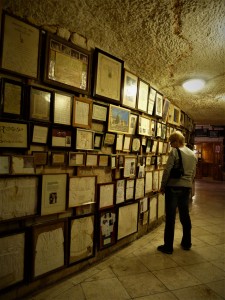 Jimmy kompla jdawwarni madwar is-santwarju li ġewwa fih jinkorpora wkoll l-għerien naturali tal-post li indubbjament jagħtuh laqta’ pjuttost insolita u surreali. Iżda daqstant ieħor bqajt impressjonata bil-kwantità ta’ ex-voto oħrajn li kellhom kull xorta ta’ forma: ittri, ritratti, x-rays, ċertifikati, ilbies tat-trabi, krozzi, u dak kollu li tista’ timmaġina. Wegħdi magħmula mhux biss mill-Maltin imma minn kull ġens li qatt żar dan il-post. Infatti peress li fil-Mellieħa hemm diversi lukandi, it-turisti spiss isibu ruħhom f’dan il-lok, u anki dawk li mhumiex Kristjani, xorta waħda jiġu mistiedna biex jittawwlu u jaraw x’hemm. Uħud minn dawn, imqanqla minn dik ix-xhieda kollha ta’ sabar, fejqan u mirakli, bla ma jafu kif, isibu ruħhom huma wkoll jitolbu l-għajnuna quddiem il-Madonna u numru minnhom, jerġgħu jirritornaw lura lejn gżiritna bir-rigal tagħhom meta talbhom jinstema’. Minn fost il-ħafna oġġetti li kien hemm, sibt ruħi qiegħda naqra ġrajja minn ġurnal li kienet qed tirrakkonta kif koppja Ingliża li t-tobba kienu qatgħulhom qalbhom li għad ikollhom tarbija, meta żaru dan is-santwarju u għamlu t-talba tagħhom, huma rritornaw lejn artna tmien snin wara b’żewġt itfal tagħhom.
Jimmy kompla jdawwarni madwar is-santwarju li ġewwa fih jinkorpora wkoll l-għerien naturali tal-post li indubbjament jagħtuh laqta’ pjuttost insolita u surreali. Iżda daqstant ieħor bqajt impressjonata bil-kwantità ta’ ex-voto oħrajn li kellhom kull xorta ta’ forma: ittri, ritratti, x-rays, ċertifikati, ilbies tat-trabi, krozzi, u dak kollu li tista’ timmaġina. Wegħdi magħmula mhux biss mill-Maltin imma minn kull ġens li qatt żar dan il-post. Infatti peress li fil-Mellieħa hemm diversi lukandi, it-turisti spiss isibu ruħhom f’dan il-lok, u anki dawk li mhumiex Kristjani, xorta waħda jiġu mistiedna biex jittawwlu u jaraw x’hemm. Uħud minn dawn, imqanqla minn dik ix-xhieda kollha ta’ sabar, fejqan u mirakli, bla ma jafu kif, isibu ruħhom huma wkoll jitolbu l-għajnuna quddiem il-Madonna u numru minnhom, jerġgħu jirritornaw lura lejn gżiritna bir-rigal tagħhom meta talbhom jinstema’. Minn fost il-ħafna oġġetti li kien hemm, sibt ruħi qiegħda naqra ġrajja minn ġurnal li kienet qed tirrakkonta kif koppja Ingliża li t-tobba kienu qatgħulhom qalbhom li għad ikollhom tarbija, meta żaru dan is-santwarju u għamlu t-talba tagħhom, huma rritornaw lejn artna tmien snin wara b’żewġt itfal tagħhom.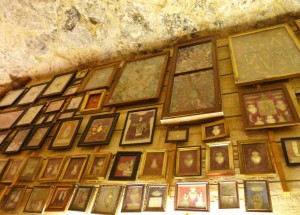 Ex-voto oħra ta’ qisien differenti, li ħafna minnhom ġew maħdumin mill-fidda fid-19 il-seklu, juru diversi partijiet tal-ġisem bħala rappreżentazzjoni ta’ b’hiex kien marid l-individwu li għamel il-wegħda. Numru minnhom għandhom forma ta’ qalb imma dawn huma simbolu tal-imħabba lejn il-Madonna. Oħrajn juru par għajnejn u id u dawn kienu jissimbolizzaw is-superstizzjoni tal-magħmul li ġej mill-għajn. Bħall-oġġetti l-oħra, anki dawn jitfgħu dawl fuq is-soċjetà li għamlithom, hekk kif l-abbundanza li ngħataw biha u l-fatt li ħafna minnhom huma identiċi, juru li tant kien hemm talba għal dawn il-wegħdi, li dawn l-oġġetti kienu qed jiġu manifatturati fil-kwantità u mibjugħa. Iżda darba minnhom kien ġie żmien meta isqof partikolari kien beda jitnaffar minn dawn l-affarijiet, uħud minnhom saħansitra superstizzjużi, imwaħħla madwar l-artali tal-knejjes kollha! U għalhekk hu ordna li dawn kellhom jitneħħew minnufih u jiġu merfugħa fis-sagristija, b’eċċezzjoni tal-qalb li kienet tirrappreżenta l-imħabba lejn il-Madonna. Infatti Jimmy għadu sa llum isib minn dawn l-ex-voto fil-kaxxi iżda hu jemmen li rigward dawn il-wegħdi, jiswew kemm jiswew, u juru x’juru, jeżisti l-obbligu li dawn jintwerew fil-pubbliku peress li huma kienu kollha doni li ngħataw b’qima, b’rispett u b’imħabba lill-Madonna. Għaldaqstant hu qed jagħmel minn kollox biex jesponi kull oġġett li jingħata lis-santwarju, akkost il-problema tal-ispazju u l-fatt li dawn il-wegħdi għadhom deħlin.
Ex-voto oħra ta’ qisien differenti, li ħafna minnhom ġew maħdumin mill-fidda fid-19 il-seklu, juru diversi partijiet tal-ġisem bħala rappreżentazzjoni ta’ b’hiex kien marid l-individwu li għamel il-wegħda. Numru minnhom għandhom forma ta’ qalb imma dawn huma simbolu tal-imħabba lejn il-Madonna. Oħrajn juru par għajnejn u id u dawn kienu jissimbolizzaw is-superstizzjoni tal-magħmul li ġej mill-għajn. Bħall-oġġetti l-oħra, anki dawn jitfgħu dawl fuq is-soċjetà li għamlithom, hekk kif l-abbundanza li ngħataw biha u l-fatt li ħafna minnhom huma identiċi, juru li tant kien hemm talba għal dawn il-wegħdi, li dawn l-oġġetti kienu qed jiġu manifatturati fil-kwantità u mibjugħa. Iżda darba minnhom kien ġie żmien meta isqof partikolari kien beda jitnaffar minn dawn l-affarijiet, uħud minnhom saħansitra superstizzjużi, imwaħħla madwar l-artali tal-knejjes kollha! U għalhekk hu ordna li dawn kellhom jitneħħew minnufih u jiġu merfugħa fis-sagristija, b’eċċezzjoni tal-qalb li kienet tirrappreżenta l-imħabba lejn il-Madonna. Infatti Jimmy għadu sa llum isib minn dawn l-ex-voto fil-kaxxi iżda hu jemmen li rigward dawn il-wegħdi, jiswew kemm jiswew, u juru x’juru, jeżisti l-obbligu li dawn jintwerew fil-pubbliku peress li huma kienu kollha doni li ngħataw b’qima, b’rispett u b’imħabba lill-Madonna. Għaldaqstant hu qed jagħmel minn kollox biex jesponi kull oġġett li jingħata lis-santwarju, akkost il-problema tal-ispazju u l-fatt li dawn il-wegħdi għadhom deħlin.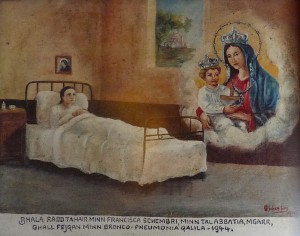 Proġett ieħor li dejjem isus fuq moħħ Jimmy jirrigwarda r-restawr tal-kwadri ex-voto sabiex dawn jiġu konservati għar-referenza tal-ġenerazzjonijiet li ġejjin warajna. Huwa jixtieq ħafna li jsib xi sponsors li jkunu jistgħu jagħtuh daqqa t’id biex isir dan ir-restawr. Sfortunatament, in-nuqqas ta’ għarfien fiż-żminijiet antiki dwar kif kien l-aħjar mezz kif jinżammu oġġetti bħal dawn, kien wassal għall-qerda ta’ għadd ta’ kwadri sinifikanti u min jaf kemm informazzjoni ntilfet! Infatti bosta minn dawn il-kwadri kienu ġew mormija wara li sofrew danni peress li tpoġġew direttament fuq blat umduż, filwaqt li oħrajn ġew anki maħsula bl-ilma wara li swiedu minħabba n-nugrufun li tqanqal mill-kwantità ta’ xemgħat u ftili taż-żejt li kienu jinxtegħlu għal siegħat twal fis-santwarju!
Proġett ieħor li dejjem isus fuq moħħ Jimmy jirrigwarda r-restawr tal-kwadri ex-voto sabiex dawn jiġu konservati għar-referenza tal-ġenerazzjonijiet li ġejjin warajna. Huwa jixtieq ħafna li jsib xi sponsors li jkunu jistgħu jagħtuh daqqa t’id biex isir dan ir-restawr. Sfortunatament, in-nuqqas ta’ għarfien fiż-żminijiet antiki dwar kif kien l-aħjar mezz kif jinżammu oġġetti bħal dawn, kien wassal għall-qerda ta’ għadd ta’ kwadri sinifikanti u min jaf kemm informazzjoni ntilfet! Infatti bosta minn dawn il-kwadri kienu ġew mormija wara li sofrew danni peress li tpoġġew direttament fuq blat umduż, filwaqt li oħrajn ġew anki maħsula bl-ilma wara li swiedu minħabba n-nugrufun li tqanqal mill-kwantità ta’ xemgħat u ftili taż-żejt li kienu jinxtegħlu għal siegħat twal fis-santwarju!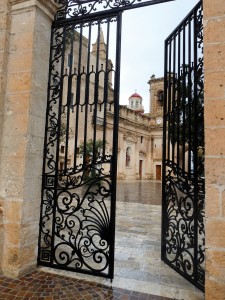 Temminx jew le f’dawn il-mirakli jew fl-istess reliġjon innifsu, ma naħsibx li tista’ tibqa’ biered għal kollox fil-preżenza ta’ din il-ġabra mmensa tat-tifkiriet ta’ nies li emmnu, afdaw u qalgħu l-għajnuna meta l-aktar li kellhom bżonnha. Ċertament jagħmel tajjeb li kieku intom jirnexxielkhom issibu ftit ħin biex iżżuru dan il-post sinifikanti ħafna f’pajjiżna u fil-kultura tagħna sabiex b’hekk taraw b’għajnejkhom, tmissu b’idejkhom u tħossu b’qalbkhom.
Temminx jew le f’dawn il-mirakli jew fl-istess reliġjon innifsu, ma naħsibx li tista’ tibqa’ biered għal kollox fil-preżenza ta’ din il-ġabra mmensa tat-tifkiriet ta’ nies li emmnu, afdaw u qalgħu l-għajnuna meta l-aktar li kellhom bżonnha. Ċertament jagħmel tajjeb li kieku intom jirnexxielkhom issibu ftit ħin biex iżżuru dan il-post sinifikanti ħafna f’pajjiżna u fil-kultura tagħna sabiex b’hekk taraw b’għajnejkhom, tmissu b’idejkhom u tħossu b’qalbkhom.Is-Santwarju tal-Madonna tal-Mellieħa jkun miftuħ mis-7.00am sa nofsinhar u mill-4.00pm sas-6.00pm. Issir ukoll quddiesa kuljum fit-8.30am, filwaqt li dik tal-Ħadd tibda fl-10.00am u tkun bl-Ingliż.
(Dan l-artiklu ġie ppubblikat fit-Torċa tas-26 ta’ Jannar 2014 fis-sensiela Ġabriet it-Tifkiriet)
-
Walk this way
When there is such a wide selection of travel destinations, why should one opt to go on a pilgrimage?
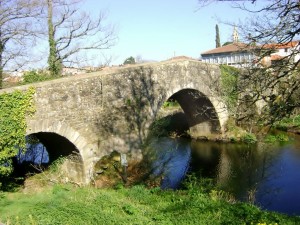 “I did ask that question to myself on the first day of my Camino,” revealed Matthias Ebejer. “The walk to Santiago de Compostela in northwest Spain is not a travel holiday like many others. It can be quite a shock for those who are not used to outdoor activities such as hiking, trekking or camping. On the other hand, it can prove to be pretty challenging to find the real meaning of it all if one is regularly accustomed to such adventures.”
“I did ask that question to myself on the first day of my Camino,” revealed Matthias Ebejer. “The walk to Santiago de Compostela in northwest Spain is not a travel holiday like many others. It can be quite a shock for those who are not used to outdoor activities such as hiking, trekking or camping. On the other hand, it can prove to be pretty challenging to find the real meaning of it all if one is regularly accustomed to such adventures.”Matthias was definitely not one of the latter. He was enticed to go on this pilgrimage by his girlfriend Deborah since she had already experienced it together with her family.
“It did not take her much to convince me. As I began to look for information about this walk, I realized that this was the perfect way to get to know Spain closely. Such a pilgrimage gives you the opportunity to walk from one village to another, crossing different regions, meeting all sorts of people and learning about their culture and the places’s history. It is also very interesting to observe the changing architectural styles, cuisine forms, and people’s mentalities as you move along the rural areas which turn into urban locations as you get closer to the final destination.”
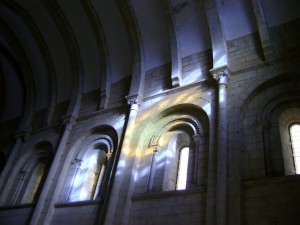 As a historian specializing in the history of the Knights Hospitallers of the Order of St John, Matthias had a further motive to try out this pilgrimage.
As a historian specializing in the history of the Knights Hospitallers of the Order of St John, Matthias had a further motive to try out this pilgrimage.“The Order was established to provide care for the sick, poor or injured pilgrims who visited the Holy Land. Yet eventually, these knights were also protecting the Christian pilgrims who travelled the St James’ Way to Santiago de Compostela. They constructed cathedrals, monasteries and pilgrims’ hostels along the route, some of which still exist today, such as the Cathedral of Portomarin, my favourite stop along the Camino. Portomarin was originally a Hospitaller commandery, and it indicated the part of the walk which was guarded by the Knights of St John. Pilgrim museums located in the various villages and towns along the Camino are quite informative and inspiring. A number of them are found within small churches or large cathedrals but one can also visit private houses which used to belong to wealthy pilgrims who donated their dwellings to become museums.”
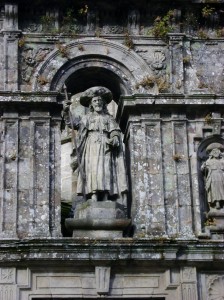 Although Santiago de Compostela has been associated with spirituality since olden times, it was the miraculous discovery of the remains of the apostle James in the ninth century in this area which made this Galician town so popular. These remains were buried in the site upon which the renowned cathedral of this town was later built.
Although Santiago de Compostela has been associated with spirituality since olden times, it was the miraculous discovery of the remains of the apostle James in the ninth century in this area which made this Galician town so popular. These remains were buried in the site upon which the renowned cathedral of this town was later built.“The authenticity of this legend has often created disputes in the Catholic Church since there are those who have their doubts about who is really buried in the crypt of this cathedral. Nevertheless, I believe that such controversy is superfluous because independently of who is buried within the silver box that lies at the heart of this holy site, the ultimate goal of each pilgrim is to stop there and meditate about the journey made and to liberate oneself from the troubling baggage of problems that one has carried along in order to come out as a new person.”
Thousands of pilgrims have walked this path for the last one thousand years and yet ‘the way’ is a very personal journey.
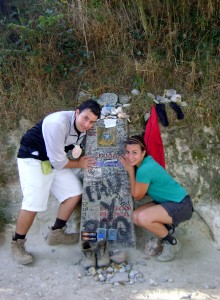 “I am a Catholic, however I am not a religious person. I must admit that my original aim for this walk was more based on cultural interest rather than a spiritual one. Yet such pilgrimages are full of surprises and my walk ended up giving me much more than that.”
“I am a Catholic, however I am not a religious person. I must admit that my original aim for this walk was more based on cultural interest rather than a spiritual one. Yet such pilgrimages are full of surprises and my walk ended up giving me much more than that.”The origin of such pilgrimages was generally based on sacrifice and repentance from one’s sins. Nowadays, things have changed and the aim for such an experience depends on each individual.
“This pilgrimage is not necessarily meant to be a sacrifice. One is not expected to suffer or to be in pain. I must say that today such a pilgrimage is more a reaction to that universal urge to leave the safety of home in order to find oneself. One has several options from where to start this pilgrimage and each have different levels of difficulties. The longest and most popular route is the Camino Francés which stretches 780 km from St. Jean-Pied-du-Port near Biarritz in France to Santiago.”
Matthew has participated two times in the Camino. The first time was 213 kms long, leaving from Ponferrada in Spain and taking 9 days to finish. The second one was 100 kms long, being the minimum distance, leaving from Sarria and taking 5 days to arrive to Santiago de Compostela.
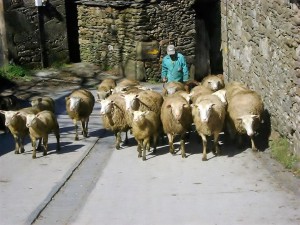 “Each time I went with a group of friends. The Camino we chose was not difficult and we walked about 20 to 25 kms daily. Friends provide good company and they also help you to go on whenever you might feel discouraged or tempted to stop. The walk was always deeply moving and enriching. Travelling on foot provides you with the leisure to look around you, to feel the earth beneath your feet, to breathe the fresh air and enjoy the various scents of the surrounding landscapes, and to listen to the sounds or relish the silence. It also presents you with those significant moments wherein you are walking alone thinking about your life, the decisions you made or are about to make, and the meaning of living itself. Although initially one might start this pilgrimage as a mere tourist, at the end of it one will recognize a considerable change in oneself.”
“Each time I went with a group of friends. The Camino we chose was not difficult and we walked about 20 to 25 kms daily. Friends provide good company and they also help you to go on whenever you might feel discouraged or tempted to stop. The walk was always deeply moving and enriching. Travelling on foot provides you with the leisure to look around you, to feel the earth beneath your feet, to breathe the fresh air and enjoy the various scents of the surrounding landscapes, and to listen to the sounds or relish the silence. It also presents you with those significant moments wherein you are walking alone thinking about your life, the decisions you made or are about to make, and the meaning of living itself. Although initially one might start this pilgrimage as a mere tourist, at the end of it one will recognize a considerable change in oneself.”During his research, Matthew discovered that even the kings of Spain participated in the Camino as part of an old tradition. Later on, during the walk he was informed that up to the present days, prisoners who have a good conduct are offered the opportunity to spend the last six months of their sentence walking the Camino with a guardian instead of spending them in prison.
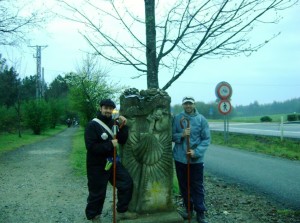 “You meet several people along this pilgrimage and you get the privilege to listen to their stories about why they chose to do this walk. Some of these narratives are very touching such as that of the Scandinavian eighty-year old man who had lost his wife some years before. As he walked part of the way with me, he told me how he had become very depressed by her death and had given up on life, waiting for his end to come soon. Then one day, he decided to stop mourning and to regain the joy of life again. After seeking help from a travel agency, he was recommended to try out the Camino and there he was seeking a way to turn a new page in his life.”
“You meet several people along this pilgrimage and you get the privilege to listen to their stories about why they chose to do this walk. Some of these narratives are very touching such as that of the Scandinavian eighty-year old man who had lost his wife some years before. As he walked part of the way with me, he told me how he had become very depressed by her death and had given up on life, waiting for his end to come soon. Then one day, he decided to stop mourning and to regain the joy of life again. After seeking help from a travel agency, he was recommended to try out the Camino and there he was seeking a way to turn a new page in his life.”One can choose the level of comfort and also the means how to do this pilgrimage. Hostels, hotels, restaurants, bars and shops are available all along the route which one can travel by walking, cycling, horse riding or even by car, although the latter does not count much.
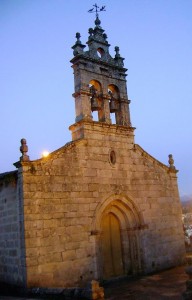 “When you decide which route you are going to take, you can buy a guidebook online and prepare your journey beforehand. These guidebooks will provide you with all the required information and also with recommendations where to stop. We used to start walking very early in the morning when it was still dark. After a 3km walk, we would stop to eat breakfast and then continue along the way for a further 17kms until we reached the next village or town, generally at around 12:30pm. We chose to rest at municipal hostels wherein we could take a shower, cook some food in the kitchen, wash our clothes and sleep in the dormitory for the price of 5 euros. Such an arrangement gave us the opportunity to visit the village or town in which we stopped or to eat a good meal at a restaurant whenever we felt like it.”
“When you decide which route you are going to take, you can buy a guidebook online and prepare your journey beforehand. These guidebooks will provide you with all the required information and also with recommendations where to stop. We used to start walking very early in the morning when it was still dark. After a 3km walk, we would stop to eat breakfast and then continue along the way for a further 17kms until we reached the next village or town, generally at around 12:30pm. We chose to rest at municipal hostels wherein we could take a shower, cook some food in the kitchen, wash our clothes and sleep in the dormitory for the price of 5 euros. Such an arrangement gave us the opportunity to visit the village or town in which we stopped or to eat a good meal at a restaurant whenever we felt like it.”“The secret is to travel as light as possible and to learn to live with the barest minimum. To cater for the changing weather, one should carry basic layering of clothing and everything should be waterproof. A first-aid kit which includes talc, cream against sores and adhesive bandages is a must. A torch is necessary to find the way in the dark. One must not forget to take any required medicine and also a medical prescription in case something happens to it. Ear plugs could be helpful when sleeping in dormitories. However one of the most important items is a comfortable and sturdy pair of shoes.”
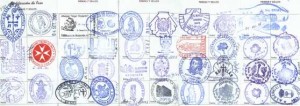 One should definitely not do this pilgrimage without carrying a pilgrim passport or credencial along with him.
One should definitely not do this pilgrimage without carrying a pilgrim passport or credencial along with him.“We obtained our credencial from the Curia of Madrid. This is a blank passport which one stamps along the way in order to confirm one’s participation in the pilgrimage. Many places are equipped with their unique Camino stamps along the route and we loved to go in search of the most appealing ones. When presented duly stamped at Santiago de Compostela, each pilgrim is given a certificate and a plenary indulgence. Eventually, this credencial becomes a very dear memento of this journey.”
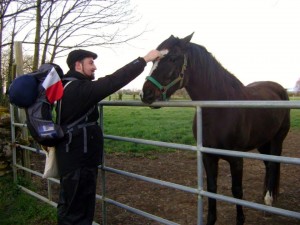 “Two other things which should be obtained before starting the walk is the pilgrims’ scallop shell and walking stick. We also placed a Maltese flag on our backpack and this was always a good conversation starter with other pilgrims. At the end of our pilgrimage, we made it a point to arrive in Santiago in time for the noon pilgrims’ mass where we received the blessing. Although we had walked for 20 kms, this experience was so uplifting and emotional that we felt no fatigue even though we had to stand up for an hour and a half as the cathedral was packed with people.”
“Two other things which should be obtained before starting the walk is the pilgrims’ scallop shell and walking stick. We also placed a Maltese flag on our backpack and this was always a good conversation starter with other pilgrims. At the end of our pilgrimage, we made it a point to arrive in Santiago in time for the noon pilgrims’ mass where we received the blessing. Although we had walked for 20 kms, this experience was so uplifting and emotional that we felt no fatigue even though we had to stand up for an hour and a half as the cathedral was packed with people.”Matthew’s first pilgrimage ended at Finisterre and the second at La Coruna.
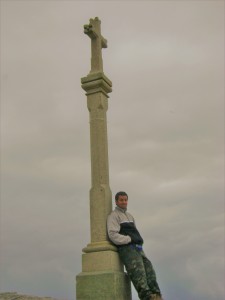 “Pilgrims used to walk another three to five days to reach the shores of Finisterre and Muxia, at the extreme point of Spain facing the Atlantic, the edge of the known world. There they would collect the scallop shells as a sign that they had walked the Camino. Legend has it that the body of St James was brought back from Jerusalem from these shores.”
“Pilgrims used to walk another three to five days to reach the shores of Finisterre and Muxia, at the extreme point of Spain facing the Atlantic, the edge of the known world. There they would collect the scallop shells as a sign that they had walked the Camino. Legend has it that the body of St James was brought back from Jerusalem from these shores.”“At Finisterre there is the tradition to throw away the walking stick which has accompanied you along your pilgrimage into the sea and then burn some of your clothes. This symbolically means that you have walked the way, that you have searched for answers and found them, and that now you are leaving the pilgrim’s life behind in order to go on with your life.”
(This article was published in the Travel Supplement issued with The Times of Malta dated 29th March 2017)
-
Christmas inspiration
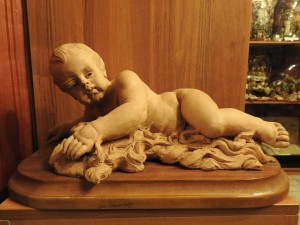 Thousands of baby Jesus statues begged for my attention during a visit at Il-Mużew tal-Bambini in Birkirkara. However, I felt mostly intrigued by a particular terracotta figure which looked completely different from the rest. Its face had captivatingly unique features and the rest of the body was very life like. Yet it was only when I met its creator, sculptor Chris Ebejer, that I understood its real value, since that baby Jesus was not just a statue but a singular work of art.
Thousands of baby Jesus statues begged for my attention during a visit at Il-Mużew tal-Bambini in Birkirkara. However, I felt mostly intrigued by a particular terracotta figure which looked completely different from the rest. Its face had captivatingly unique features and the rest of the body was very life like. Yet it was only when I met its creator, sculptor Chris Ebejer, that I understood its real value, since that baby Jesus was not just a statue but a singular work of art.“My baby Jesus creations are not popular statues that are meant for domestic use or simply to act as a representation of the son of God. They have an added value because they are sculptures and not just statues,” explained Chris when I met him at his studio in Mqabba.
“When I do such works, my aim is not only to reproduce the tenderness of a baby but also to relay an artistic style and a distinct message. Such art pieces are not restricted just to the Christmas season but they can be cherished all throughout the year due to their artistic significance.”
An unfinished terracotta sculpture of a toddler Jesus lay waiting on a workbench. I couldn’t help noticing some subtle facial similarities between this work and the other one that I had viewed before. I was curious to know whether a sculptor would have a specific image in mind of how Jesus should be represented.
“Before starting to work on something, an artist needs to have a vision of what he intends to create. One wouldn’t picture the exact image in mind but there would already be an idea of the shape, the composition, and the layout of the figure. Details will not be clear but each artist will subconsciously compose some particular features which are typical of his style.”
“I must say that the facial features of this figure were inspired by those of my nephew. When he was a baby and later on a toddler, I studied closely his facial characteristics in order to explore the difference that exists between such a young face and that of an adult. For example, I observed that a toddler’s forehead is large when compared to the rest of the face, the upper lip is usually protruding, the cheeks are chubby and the neck is fleshy.”
The sculpted figure of Jesus looked quite human and earthly and I wondered whether such work involved a spiritual process as well?
“Whenever I am creating a sculpture, my foremost thought is always art. I am not motivated by any religious intentions and I do not aspire to encourage faith or to have people praying in front of my work. I have to admit that the subject is irrelevant to me.”
Nonetheless, although creativity and originality are always his primary goals, Chris revealed that there is a limit on how much one can move out of the religious figures’ codified facial characteristics which our culture has learnt to decipher and expect.
“No one has any idea how Jesus actually looked like, neither as a baby or a child, nor as an adult. Indeed, both his face and the way in which he is represented have changed considerably along the centuries. The belief that some images such as the Veil of the Veronica and the Shroud of Turin could be historically authentic has influenced very much the present impression of Jesus’s face. Once such images are portrayed over and over again and are accepted by society, their characteristics become codified and this will help people to recognize immediately the figure of Jesus. Certainly, as an artist, there are ways and means of how to be creative when dealing with such a significant figure. However, one must know his limits so as not to come out with a profane work.”
In earlier times, when art could reach out to people more than books, especially due to widespread illiteracy, the Catholic Church often used symbols within artistic works to deliver its messages.
“There were various symbols that were portrayed with baby Jesus. In Botticelli’s artwork Madonna of the Pomegranate, Jesus is holding a pomegranate in representation of his suffering and resurrection. On the other hand, in the Madonna of the Carnation by Leonardo da Vinci, Jesus is reaching out to a carnation which is the symbol of Passion.”
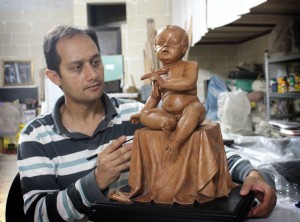 Chris pointed out to his sculpture of toddler Jesus where he had also included such symbols.
Chris pointed out to his sculpture of toddler Jesus where he had also included such symbols.“Although in this sculpture, Jesus might look just like any child, there are a number of clues which will hint to the viewer that there is more to it than that. In fact, the child in sitting on a humble box draped in cloth in allusion to when the babies of ancient royal families were placed on thrones. The young figure is holding a miniature cross in his hand and three nails lie down beneath him on the ground. All these objects, together with the boy’s meditative expression as he looks far out beyond his tender age, create an effect which suggests that the child is already seeing his mission for the future.”
As he continues with some final touches on this latest sculpture, Chris reveals that the autumn and wintery seasons tend to inspire him to create new works.
“I am deeply influenced by the change of seasons and by the transformation which they breed in the coloured landscape. Being from the rural village of Qrendi, I am very attracted to nature and my senses are intensely attuned to it. As the leaves start turning orangey red, melting in with the aroma of wet brown soil and the liquorish scent of carobs, I feel stimulated to think about Christmas and the birth and life of Jesus, and it is mainly during this period when I come up with new ideas for works with religious themes. Moreover, the earlier approach of night during these days entices me to stay more indoors and this provides me with much more time to work.”
A look at some of his finished works that were in his studio indicated that this sculptor had a particular preference to terracotta.
“I do love working with terracotta as besides being a natural medium, it also has a pleasant warm colour. It is also more fluid and softer to handle than other materials and so it allows me to work in greater tranquillity. The fact that terracotta has been in use since ancient times enhances also in me that sublime feeling that by utilising this medium, I am helping to keep this traditional technique alive.”
Apart from baby Jesus sculptures, during this season, Chris tends also to come out with new nativity creations.
“Tenderness and the love for the family are the main messages imbued in these works.”
(This article was published in Christmas Times magazine issued with The Times of Malta dated 8th December 2016)
-
It-traġedja tal-patrol boat
Kelmtejn qabel: Ktibt din il-ġrajja fl-1986, meta kelli 15 il-sena. Kienu għaddew sentejn mit-traġedja li laqtet lill-kuġinti Mary Farrugia fis-7 ta’ Settembru 1984, imma ż-żmien ftit li xejn kien taffa’ min-niket. Għaldaqstant kont qbadt pinna f’idi u ħażżiżt il-memorji tiegħi fuq il-karti sabiex b’hekk almenu moħħi u qalbi setgħu jistrieħu kemmxejn mit-toqol li din l-esperjenza kienet ħalliet fuqi wkoll. Għal xi raġuni ddeċidejt li nikteb il-ġrajja minn fomm kuġinti. Xejn minn dak li ktibt m’huwa mmaġinat għax dawn l-emozzjonijiet, il-ħsibijiet, u t-tifkiriet miktuba hawnhekk, smajthom u ġarrabthom flimkien magħha u ma’ wliedha. F’Diċembru 1987 iddeċidejt li nittajpja din il-kitba u bgħattha lill-bord editorjali tar-rivista Sagħtar sabiex jikkunsidrawha għall-pubblikazzjoni. Victor Fenech, wieħed mill-membri tal-bord editorjali, kien kitibli ittra sabiħa ferm fejn kien għarraffni kemm kienet qanqlitu din il-ġrajja. Eventwalment din ġiet ippubblikata fis-Sagħtar tal-ħarġa ta’ Frar 1987.
It-traġedja tal-patrol boat
Qomt daqsxejn kmieni aktar mis-soltu dakinhar peress li żewġi Twanny kellu jmur għax-xogħol. Ippreparajtlu daqsxejn ħobż, geżwirtulu f’karta, u poġġejtulu ġol-haversack ċkejken tiegħu.
Wara li libes il-ħwejjeġ tad-Dejma, inġabar flimkien miegħi mal-mejda biex nieħdu l-kolazzjon ta’ fil-għodu. Wara bies lit-tfal u hekk kif bies lili qalli li jekk idum daqsxejn ma jiġi, ma kelliex għalfejn ninkwieta peress li ma’ xi suldati oħra tad-Dejma kellu jmur jarmi xi murtali lejn Kemmuna. Kien għoddu ħareġ meta ftakar li kien nesa l-ġiżirana tad-deheb tiegħu. Magħha kellha mdendel salib kbir bi Kristu msallab fuqu. Kienet għal qalbu wisq dik il-ġiżirana u qatt ma kien jonqos milli jeħodha miegħu.
Qajjimt lit-tfal u tajthom jieklu u wara poġġejthom f’kamrithom biex jilgħabu daqsxejn sakemm jien innaddaf id-dar. Ma tantx stajt nitħabat peress li kont tqila bit-tielet tarbija tiegħi, iżda xi tfarfira ‘l hawn u ‘l hemm stajt nagħmilha faċilment.
Xi ftit ħin wara ġiet it-tifla ta’ ziti Fiona biex tgħini daqsxejn. Ħaslitli l-art u l-ħwejjeġ u b’hekk ħelsitni mix-xogħol iebes tiegħi. Qabel telqet wegħedtha li għal xil-5:00pm, x’ħin kellu jiġi Twanny, kellna neħduha magħna l-baħar. Sadanittant, biex ngħaddi ftit tal-ħin, qbadt żewġ ħbula u waħħalthom flimkien f’forma ta’ bandla bil-ħsieb illi la jiġi Twanny idendilha x’imkien fejn it-tfal ikunu jistgħu jitbandlu fuqha.
Għaddejt il-ħin tal-ġurnata bħas-soltu. Kienu saru xil-5:15pm meta smajt taħbita fuq il-bieb. Ħsibt li kien ġie Twanny iżda kienu xi zijiet tiegħi. Staqsewni jekk Twanny kienx irritorna d-dar. Għedtilhom li le u kollha ħarsu lejn xulxin b’ħarsa li tfisser ħafna. Għall-ewwel ma ndunajt b’xejn iżda meta bdew jiżdiedu aktar zijiet u nies li jiġu minni, bdejt nitħasseb. Fuq wiċċhom stajt naqralhom xi dulur jew biża’ li kien qiegħed inikkithom.
Saru s-7:00pm u kont għadni ma naf b’xejn. Josef, it-tifel il-kbir tiegħi ta 5 snin, beda jilgħab mar-radju sa ma xegħlu. Kienu bdew l-aħbarijiet. Ma tajtx każhom sakemm smajt xi kliem li ġibidli l-attenzjon tiegħi….
Spiċċaw il-punti ewlenin u l-qarrej beda jaqra l-aħbarijiet aktar fid-dettall. B’li smajt bqajt imbellha u msammra ma’ l-art! Qalbi bdiet tħabbat sitta sitta u ħassejtha trid tinqala’ minn postha bit-taħbit.
Xtaqt inwerżaq imma ma flaħtx. Ħassejt rasi ddur bija. Ma ridtx nemmen lil widnejja li Twanny tiegħi kien… mejjet. Il-lanċa li fuqha kien żewġi flimkien ma’ xi suldati oħra kienet splodiet! Wieħed kien salva, erbgħa oħra sabuhom mejtin u mtertqin f’wiċċ l-ilma, u t-tnejn l-oħra baqgħu ma nstabux.
Ġrejt lejn dar ommi biex inċempel lil dawk li kienu nkarigati. Kienu tawni aħbar li ħawditni. Ma kontx naf jekk kellix nittama jew nitbikkem: Twanny tiegħi kien wieħed minn dawk li ma nstabux.
“Imma tgħid salva?” staqsejt bejni u bejn ruħi. “Forsi kien iffortunat u salva. Mhux li kien! Imma jekk le? Alla tiegħi għinni għax ser niġġennen,” bdejt ngħid imbeżżgħa, imħawwda, u mbellha.
Xi wħud jaħsbu li t-tfal ma jifhmux xi jkun qed jiġri iżda dan mhu minnu xejn. Josef u Roderick, iż-żewġt itfal tiegħi, bdew jistaqsuni għal missierhom. Iż-żgħir ta’ sentejn beda jibki għax ried lil missieru ħdejh. Iżda l-aktar ħaġa li għaġġbitni kienet meta t-tifel żgħir ta’ ziti ta’ 4 snin resaq lejhom u qalilhom, “Għaliex qed tibku? Il-papà tagħkom miet għax waqa’ minn fuq id-dgħajsa. Issa ma jiġix għax miet.”
Għalkemm ma ridtx nemmen, ħassejt li dan it-tifel ċkejken kien qed jgħid il-verità.
Issa kien dalam sewwa u kulħadd qata’ qalbu milli għad jara lil Twanny ħaj. Kulħad inġabar lejn daru u raqqadt lil Fiona miegħi dakinhar biex teħodli ħsieb lit-tfal għax ma tantx kont qed inħossni fiha. Dakinhar ħadd ma seta’ jagħlaq għajn m’għajn u kull ħoss, anki l-iċken wieħed li beda jinstema’, bdejt nistħajjlu li żewġi ġie lura. Sa fl-aħħar moħħi ttaqqal bl-inkwiet u rqadt. Dħalt f’dinja ta’ ħolm ikreh liema bħalu; bdejt nara wiċċ żewġi mtertaq u mbiċċer b’ħarsa li twaħħax f’għajnejh.
Qomt mis-sodda mbeżżgħa u sibt li kienu xil-5:00am. Ma stajt norqod b’xejn u qgħdt inħares lejn iż-żewġ uliedi reqdin qishom xi żewġ anġli. “Il-kbir jixbħu wisq!” għedt f’qalbi. Xagħru safrani u għajnejh koħol kienu bħal ta’ missieru. Intbaħt li dakinhar ibni ma kellux dik it-tbissima fuq fommu bħas-soltu u minn ħin għall-ieħor kien isejjaħ, “Papà, papa`.”
Sejf ta’ dulur daħalli f’qalbi u f’dak il-ħin ftakart fit-tieġ tagħna. Kemm kont ħsibt li ser ngħaddi ħajja twila u ferħana miegħu. Għall-ħabta tas-6:00am qam kulħadd. Kull siegħa għaddejnieha nisimgħu l-aħbarijiet b’tama kbira iżda kien kollu għalxejn. Minn ħin għall-ieħor bdejt nirċievi telefonati mingħand niesi biex juruni s-sogħba tagħhom. Għal xil-11:00am irċevejt telefonata fejn għarrfuni li ġisem Twanny kien għadu ma nstabx. Qaluli wkoll li veru kellha tkun għalih il-mewt għax proprju dakinhar, hu ma kienx imissu jmur bil-murtali, imma kien ċeda lil ħabibu biex imur għall-festa. Twanny ma kien qalli xejn dwar dan għax kieku żgur li ma kontx inħallih imur.
Bqajna nittamaw għal bosta u bosta ġranet, imma kien kollu ta’ xejn. Kull lejl bdejt ngħaddih nibki u nħares lejn is-saqaf. It-tfal bdew iħossu aktar u aktar it-telfa ta’ missierhom! “Imma,” kont naħseb, “kemm nista’ ndum nigdbilhom? It-tfal qed jindunaw li ġara xi ħaġa lil missierhom.”
Iż-żmien itir bla ma biss tinduna u kollox jintesa miegħu. Hekk ukoll intesiet din it-traġedja iżda jien ma ninsiha qatt! Minn din il-ġrajja li ġrat sewwasew fis-7 ta’ Settembru 1984, għaddew sentejn…
Ma kinetx l-unika telfa tiegħi dik ta’ żewġi. Bix-xokk u l-qatgħa li ħadt, it-tarbija tiegħi twieldet qabel iż-żmien u tpoġġiet f’inkubatur. Semmejtu Anthony-Paul għal żewġi u għal missieri li kien miet xi ftit ġimgħat biss qabel Twanny. Ibni dam jilgħabha mal-mewt għal tliet ġimgħat, iżda hekk kif kien kważi rebaħ din il-battalja qalila, l-aħħar frott ta’ żewġi miet u mar jingħaqad flimkien ma’ missieru. Għadni niftakar li ma ridtx nemmen lil għajnejja hekk kif rajt lill-għażiż ibni mejjet! Ma ridtx nitilqu minn idejja. Kien qisu eżatt bambin ċkejken. Id-dmugħ qabiżli minn xfar għajnejja hekk kif missejtlu jdejh u xofftejh tarija u rqaq.
Kemm ħsibt li proprju b’dawk l-idejn għad imellisli wiċċi u proprju b’dawk ix-xufftejn għad isejjaħli, “Ma.” Iżda l-akbar għafsa ta’ qalb kienet meta firduli ‘l ibni minni u rajtu jgħib taħt it-trab għal dejjem! ….. Intlift minn sensija u ma nafx x’ġara aktar. Iżda meta stenbaħt sibt ruħi mdawwra b’uliedi, b’ommi, u b’zijieti.
Il-memorja bdiet tiġini f’moħħi bil-mod il-mod. Iva, issa rajt kollox ċar. Issa ma kien fadalli lil ebda wieħed minnhom. F’inqas minn xahrejn kont tlift lil missieri, lil żewġi u lil ibni. Bkejt kemm flaħt sakemm dmugħ iżjed xi nxerred ma baqgħalix.
Wara xi żmien, lil uliedi ħadthom iċ-ċimiterju biex isellmu lin-nannu u lil ħuhom. F’dik is-sikta tlabna flimkien għal ruħhom. F’qalbi kont qed nitlob għal ruħ żewġi wkoll. Kont mitlufa fi ħsibijieti meta ibni l-kbir reġa’ staqsieni l-istess mistoqsija li kien ilu jistaqsini għal bosta drabi, “Ma, bilħaqq il-papà għadu ma ġiex jara lil Anthony-Paul.”
“Il-papà jiġi, dalwaqt jiġi,” erġajt tennejtlu l-istess tweġiba li kont ilni ngħidlu għal sena sħiħa.
Dawwart wiċċi biex naħbi żewġ demgħat li ħarbuli minn għajnejja. Mur għidilhom lil uliedi li missierhom qiegħed jitlob għalihom mis-sema. Mur għidilhom li qatt u qatt m’hu ser jirritorna lura lejn id-dar! Tassew kienu tfal sfortunati aktar mill-oħrajn dawn uliedi għax lanqas ġisem missierhom ma nstab. F’jum il-missier, lanqas fjuri fuq qabru ma jistgħu jagħmlulu, għax ġismu qiegħed hemm, imtertaq taħt il-baħar, fis-skiet ta’ dejjem…..
-
Out of its shell
No one can really say what inspired Indrí Dimech known as Il-Mikk in 1898 to start decorating the façade of his property in Għaxaq with hundreds of snails and seashells which he collected from local and foreign beaches. However, some suggest that he might have seen such decorations when he was living abroad.
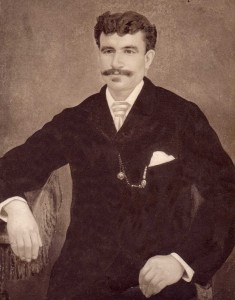 Known to be able to do whatever came up to his mind, within two years, Indrí turned the two upper sides of the walls of his property in a huge canvas as he craftly designed them with religious symbols made out of snails and seashells. He embellished this artwork further by adding also three niches, a statue, and some writing which included his surname. Soon this property became renowned as Id-Dar tal-Bebbux (the house of snails).
Known to be able to do whatever came up to his mind, within two years, Indrí turned the two upper sides of the walls of his property in a huge canvas as he craftly designed them with religious symbols made out of snails and seashells. He embellished this artwork further by adding also three niches, a statue, and some writing which included his surname. Soon this property became renowned as Id-Dar tal-Bebbux (the house of snails).More than a century later, much of this unique artistic work has somehow succeeded to withstand the test of time. Yet considerable sections of it have been lost and what remains is in dire need of preservation and restoration. For many years, the Local Council of Għaxaq has been trying to obtain the necessary funds to save this singular property in St Mary Street but no one seems to be interested to protect this national cultural heritage.
“A recent application for funds in a scheme that was dedicated to the restoration of historical sites was disqualified since the work to restore Id-Dar Tal-Bebbux was going to take more than six months. Moreover, we were informed that there were no workers available in the Restoration Section who could do the type of work required for this property,” said Darren Abela, Mayor of the Għaxaq Local Council.
“We were all very disappointed to receive this news. It is deplorable to notice that it is always the same Local Councils who receive the funds to do restoration projects in their localities whilst our locality always ends up with nothing! Although we are in favour of such works, we find it difficult to understand why similar sites obtain the funds to be restored, whereas this property in Għaxaq which is unique, continues to be ignored.”
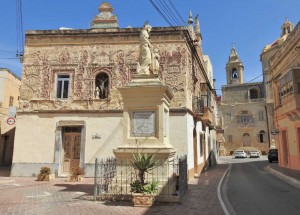 Abela insisted that about fifty years ago, this house was considered to be his village’s jewel while today, it is regarded as the village’s sorrow as it is painful to look at its pitiful state.
Abela insisted that about fifty years ago, this house was considered to be his village’s jewel while today, it is regarded as the village’s sorrow as it is painful to look at its pitiful state.“Everyone who sees this house or who hears about it recommends us to restore its old decorations before we lose them once and for all. And yet, nobody has ever came forward with any solid action to commence these works.”
No estimate of the value of the work required has ever been done because such a project requires particular expertise which till now was not located.
“At the moment, there are three different families living in this property and they have all agreed that this work should be done. I hope it won’t be too late if we’ll ever have the funds to start this project. It is already doubtful whether the snails and seashells which have fallen out could ever be replaced.”
It would definitely be a pity to allow further deterioration of this place. Indeed, Indrì Dimech’s work was deemed significant enough to be included in the National Inventory of the Cultural Property of the Maltese Islands where there is detailed information about the niches and the statues which form part of Id-Dar tal-Bebbux.
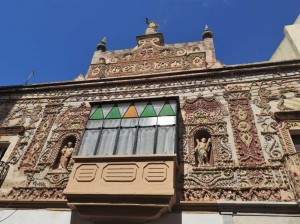 High up on the main facade which bears the date 1901, a small stone statue of the Virgin Mary, the patron saint of Għaxaq, stands triumphantly on a large sphere of clouds. Below it, on the left hand side, one can observe a niche with a stone statue of St Joseph holding baby Jesus; a saint which is also very cherished in this village and for whom a secondary feast is dedicated. On the right, another niche was constructed to contain the stone statue of St Andrew; the saint which has the same name as Indrì. Both these niches have been lavishly decorated with beautiful patterns made with snails and seashells and coloured with paint in between. Only the first three letters of the surname Dimech remain intact on the aperture of the left balcony, the middle balcony displays the letters C. Asciak, whilst the word Malta is still in one piece on the right balcony.
High up on the main facade which bears the date 1901, a small stone statue of the Virgin Mary, the patron saint of Għaxaq, stands triumphantly on a large sphere of clouds. Below it, on the left hand side, one can observe a niche with a stone statue of St Joseph holding baby Jesus; a saint which is also very cherished in this village and for whom a secondary feast is dedicated. On the right, another niche was constructed to contain the stone statue of St Andrew; the saint which has the same name as Indrì. Both these niches have been lavishly decorated with beautiful patterns made with snails and seashells and coloured with paint in between. Only the first three letters of the surname Dimech remain intact on the aperture of the left balcony, the middle balcony displays the letters C. Asciak, whilst the word Malta is still in one piece on the right balcony.Another niche with three stone statues showing a crucified figure of Christ accompanied by the Virgin Mary and St John the Evangelist claims the attention at the center of the other facade. Unfortunately, many of the shells which composed the intricate designs around this niche are now lost.
Several other designs which include religious symbols, particularly those connected to the Passion of the Christ, can also be recognized. A number of other forms show angels, crosses, palm trees, lions, unicorns, fountains, churches, Għaxaq’s coat of arms, and many others.
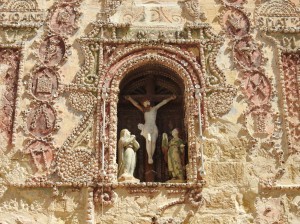 Relatives of Indrì Dimech who often worked as a sailor in the Middle East narrated how he used to return from his voyages carrying numerous shells. Once back home in Għaxaq, he would cover the facade of his property with bedsheets and continue working on his masterpiece. It is not known whether these sheets served as a protection against the sun or whether he intended to surprise his neighbours once he was finished with his work.
Relatives of Indrì Dimech who often worked as a sailor in the Middle East narrated how he used to return from his voyages carrying numerous shells. Once back home in Għaxaq, he would cover the facade of his property with bedsheets and continue working on his masterpiece. It is not known whether these sheets served as a protection against the sun or whether he intended to surprise his neighbours once he was finished with his work.At the time, Indri’s property functioned as a bar wherein men gathered to have a drink and to socialize after a hard day’s work. In there, those who were devoted and passionate about the feast of St Mary met to discuss the events which had to be organized. Meanwhile, this place served also as the hub which sparked the idea of the establishment of the first social club in Għaxaq that was to be dedicated to the titular of the Assumption of Mary.
Even Indrì gave a helping hand to decorate the square that was located in front of his property during the feast. Numerous oil lamps and coloured paper turned the surrounding environment in a surreal atmosphere, especially with his bizarre property in the background.
Today, this property stands in the core of the village, just a few metres away from Għaxaq’s parish church. Although Indrì is gone, his aptitude to mesmerize still lingers on as passers by are captivated by the strange designs that he created. Hopefully, as soon as possible, the authorities would appreciate this gem for its uniqueness and would take the necessary actions to restore back its beauty and allure of bygone days.
(This article was published in the ‘Homes’ Supplement issued with The Sunday Times of Malta dated 3rd April 2016)
Travelogue
Archives
| M | T | W | T | F | S | S |
|---|---|---|---|---|---|---|
| « Jan | ||||||
| 1 | 2 | 3 | 4 | 5 | 6 | 7 |
| 8 | 9 | 10 | 11 | 12 | 13 | 14 |
| 15 | 16 | 17 | 18 | 19 | 20 | 21 |
| 22 | 23 | 24 | 25 | 26 | 27 | 28 |
| 29 | 30 | |||||
Recent Posts
- A MATTER OF FATE
- MALTA’S PREHISTORIC TREASURES
- THE MAGIC IS IN THE DETAIL
- THE SELLING GAME
- NEVER FORGOTTEN
- Ġrajjiet mhux mitmuma – 35 sena mit-Traġedja tal-Patrol Boat C23
- AN UNEXPECTED VISIT
- THE SISTERS OF THE CRIB
Comments
- Pauline Harkins on Novella – Li kieku stajt!
- admin on IL-KARNIVAL TRAĠIKU TAL-1823
- Albert on IL-KARNIVAL TRAĠIKU TAL-1823
- Martin Ratcliffe on Love in the time of war
- admin on 24 SENA ILU: IT-TRAĠEDJA TAL-PATROL BOAT C23